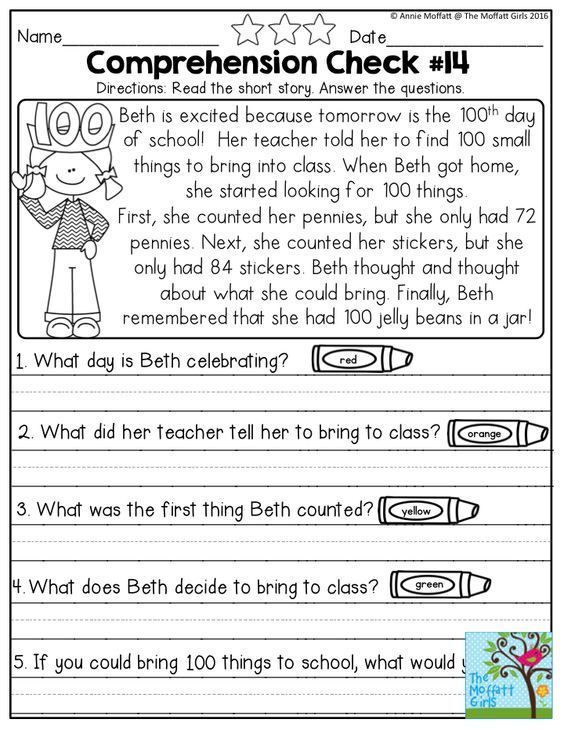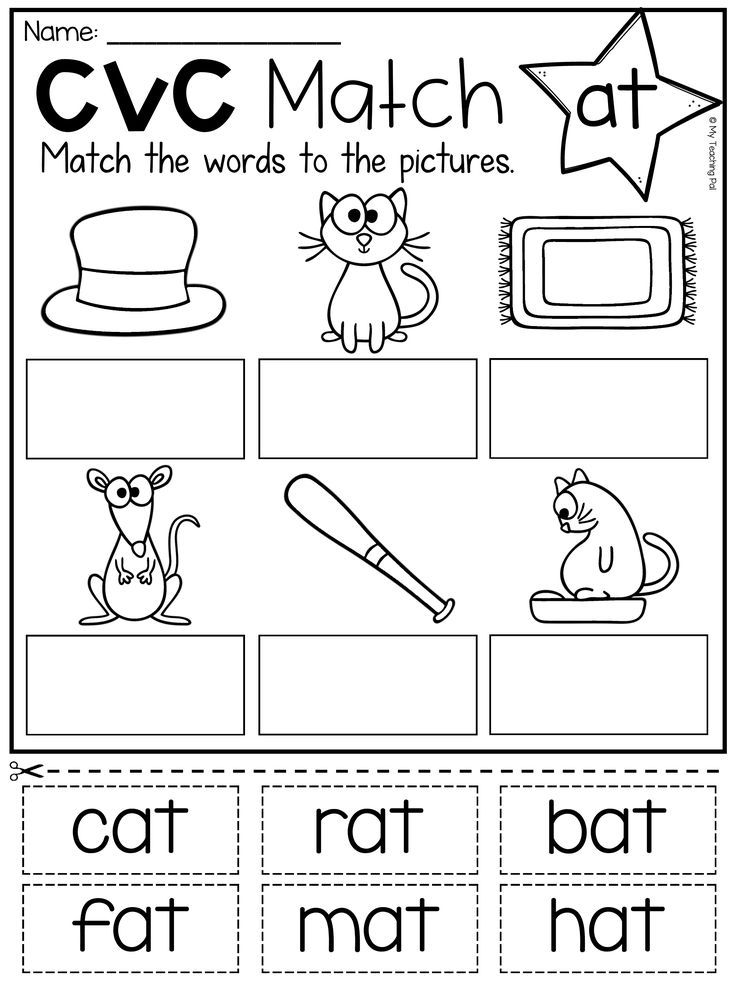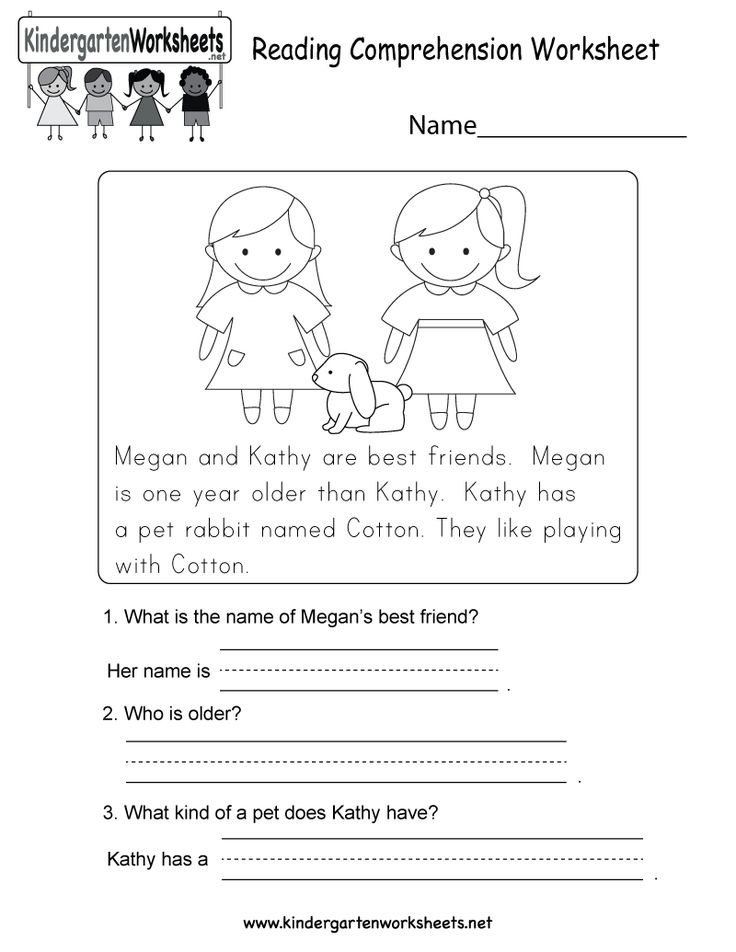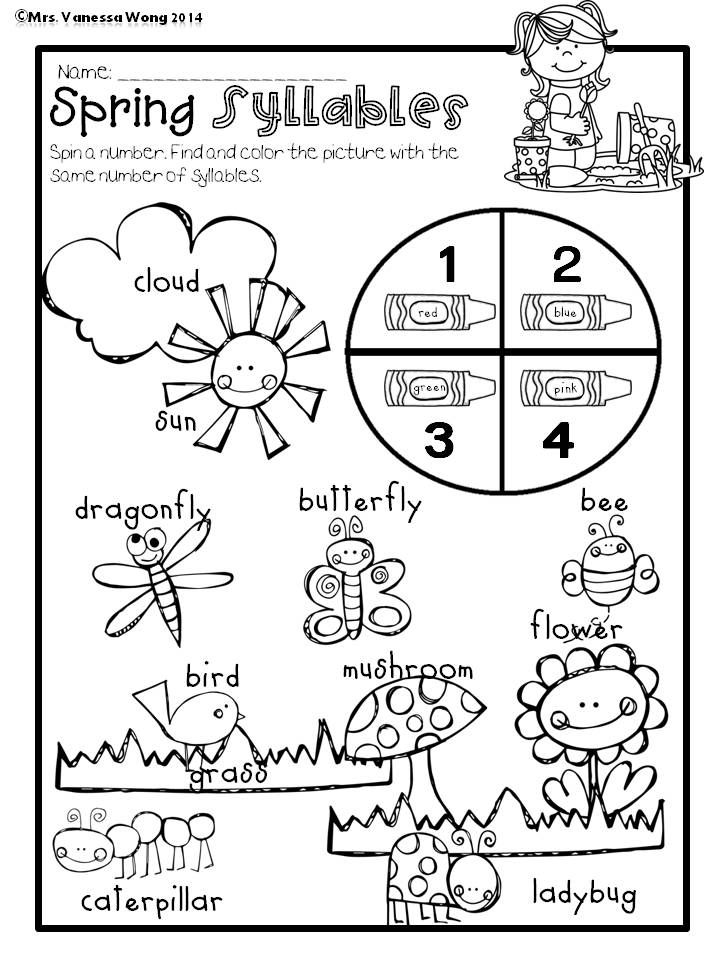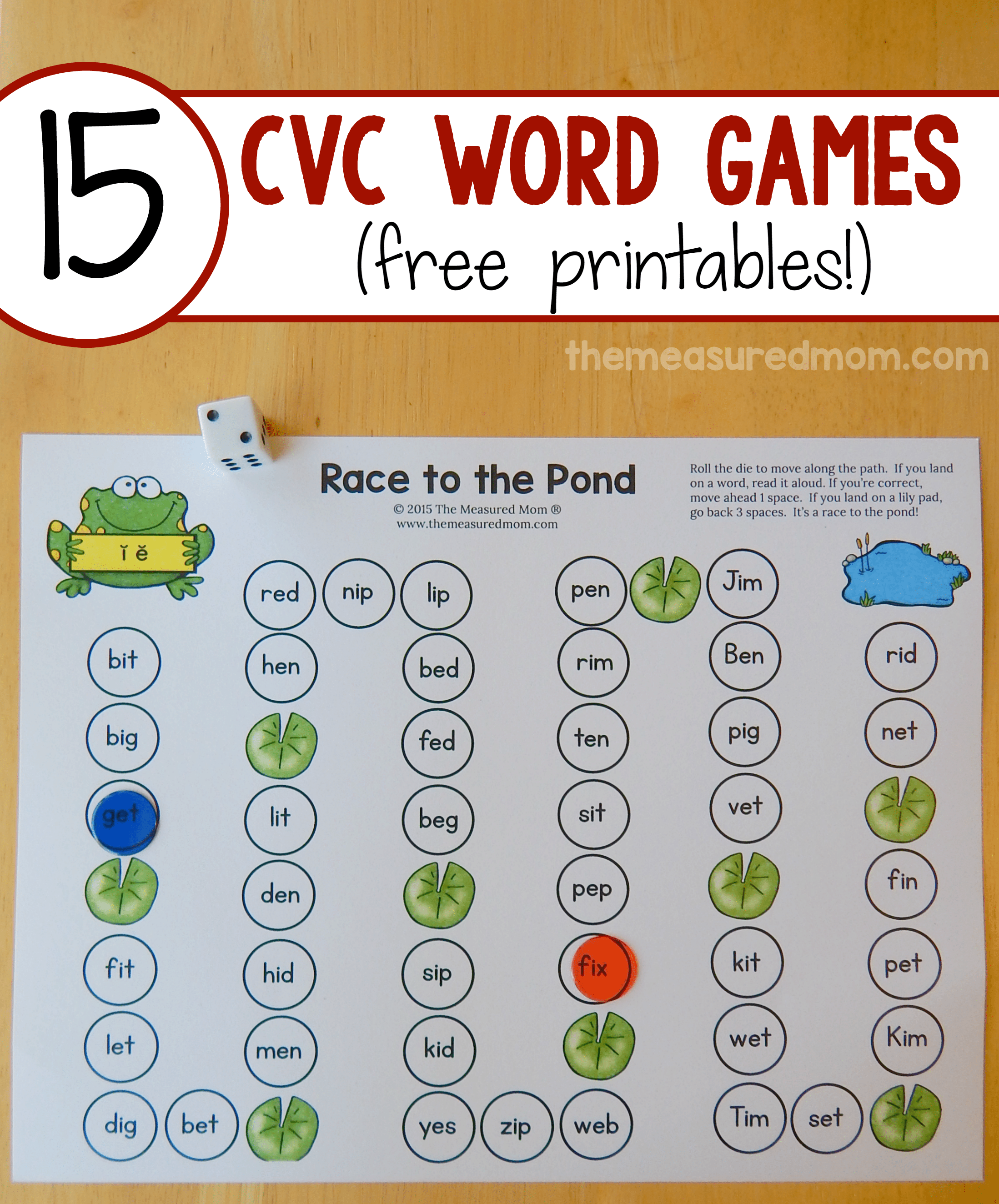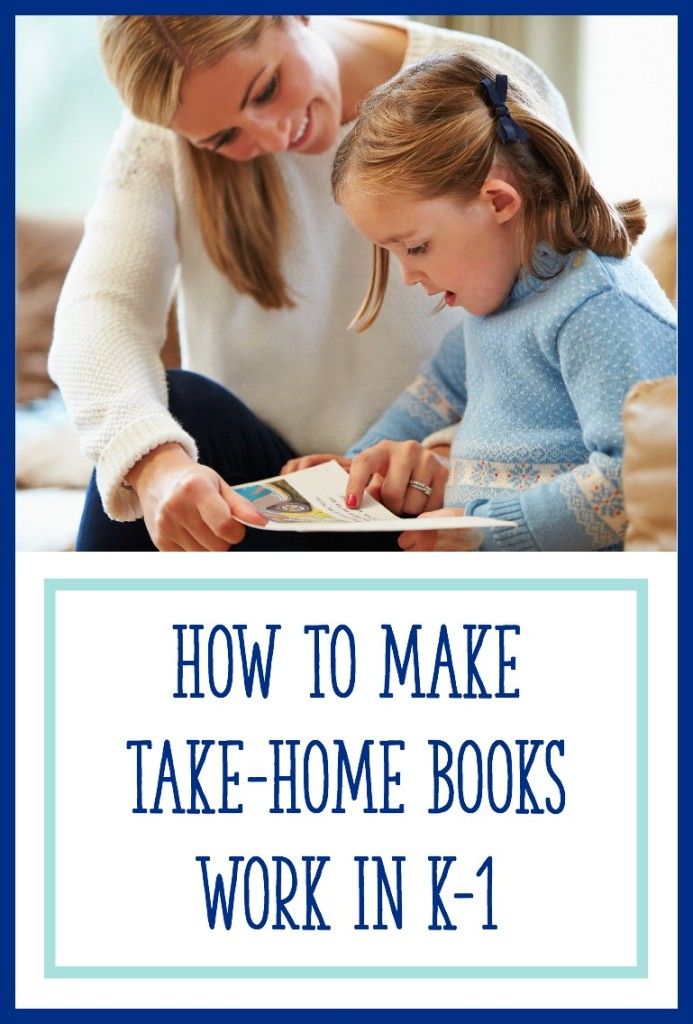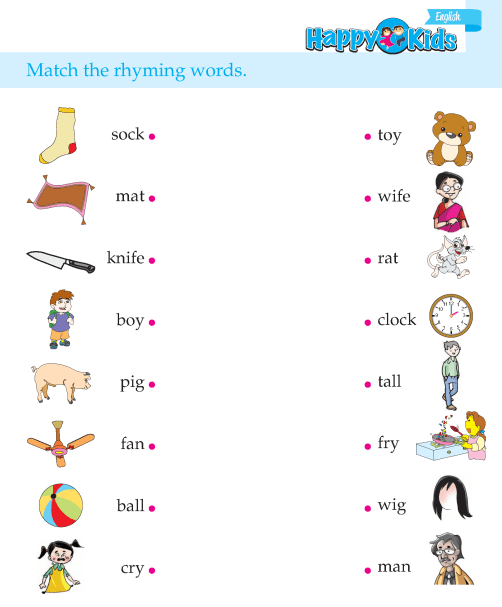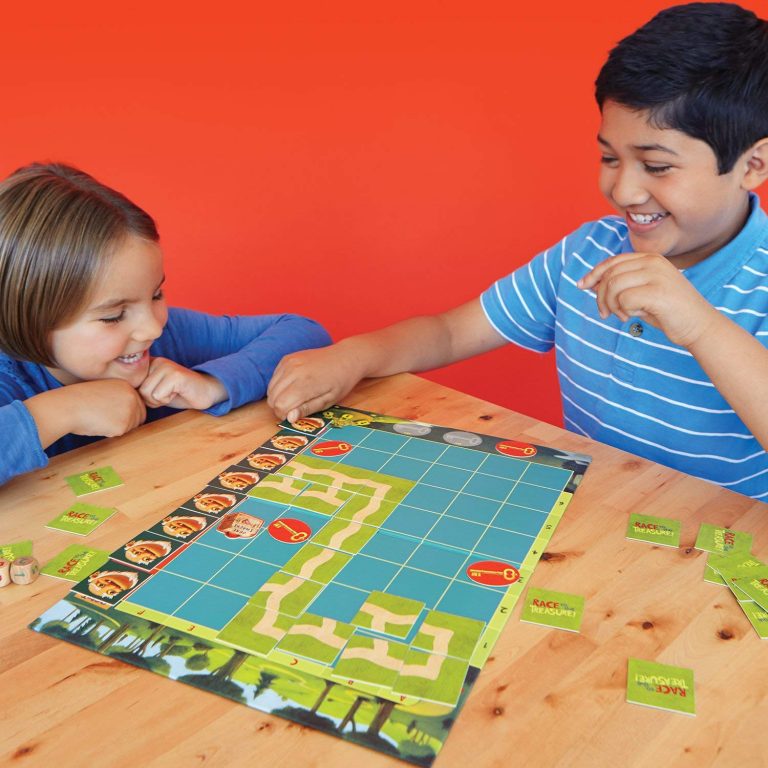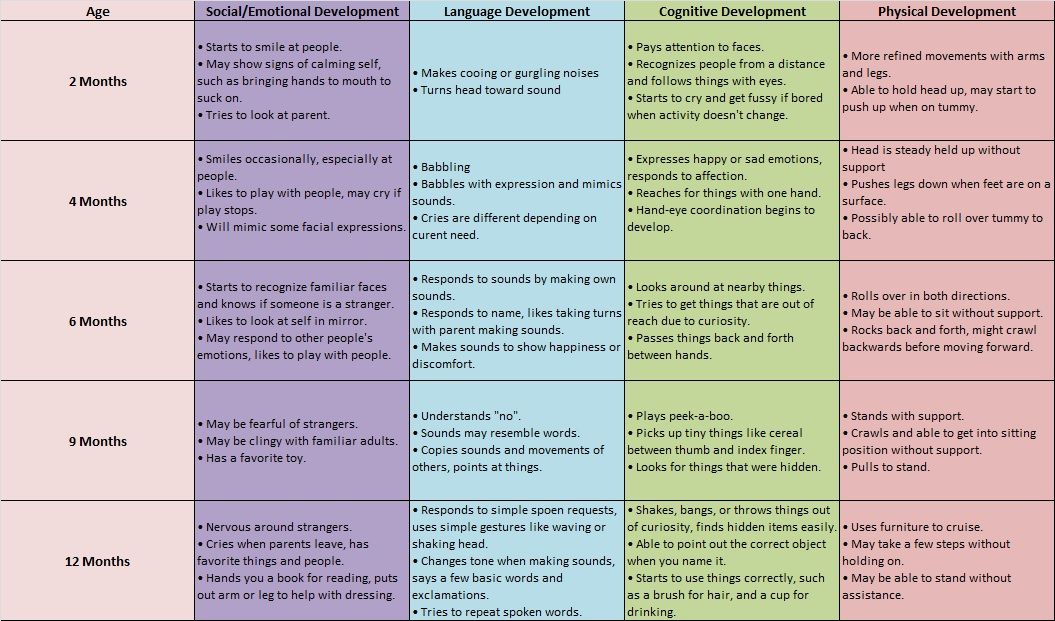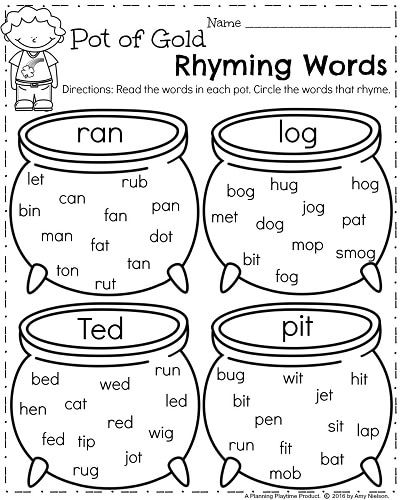Reading goals for first graders
1st Grade Reading IEP Goals
This IEP goal bank is on first-grade reading prerequisite skills, including progress monitoring, data collection tools, worksheets, and lesson packs for all top nationally used IEP goals.
Best First Grade Reading IEP Goals
Free IEP goals and objectives for 1st grade reading that are focused on a learning progression for most common core clusters to build strong reading foundational skills for future grades.
MathELA
Kindergarten1st2nd3rd4th5th6th7th8th
First Grade Reading IEP Goals
L.1: Language
- L.1.1: Demonstrate command of the conventions of standard English grammar and usage when writing or speaking.
- L.1.1.A: Print all upper- and lowercase letters.
- L.1.1.B: Use common, proper, and possessive nouns.
- This goal covers the following objectives
- Form the singular possessive
- Select the possessive noun that matches the picture
- Identify proper nouns
- Sort common and proper nouns
- L.
1.1.C: Use singular and plural nouns with matching verbs in basic sentences (e.g., He hops; We hop).
- This goal covers the following objectives
- Complete the sentence with the best subject
- Complete the sentence with the best verb
- Irregular plurals: select the word that matches the picture
- Select the regular plurals word that matches the picture
- L.1.1.D: Use personal, possessive, and indefinite pronouns (e.g., I, me, my; they, them, their, anyone, everything).
- This goal covers the following objectives
- Pronoun-verb agreement: Complete the sentence with the best subject
- Pronoun-verb agreement: Complete the sentence with the best verb
- Complete the sentence with the correct personal pronoun
- Choose between subject and object personal pronouns
- L.1.1.E: Use verbs to convey a sense of past, present, and future (e.g., Yesterday I walked home; Today I walk home; Tomorrow I will walk home).
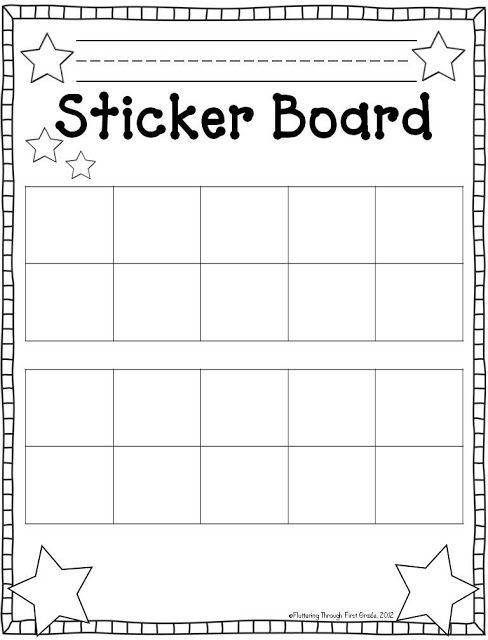
- This goal covers the following objectives
- Place sentences with irregular verbs on a timeline
- Select the sentence that tells about the future
- Select the sentence that tells about the past
- Select the sentence that tells about the present
- L.1.1.F: Use frequently occurring adjectives.
- This goal covers the following objectives
- Comparing: Pictures using adjectives
- Use sense words
- Use number words
- Compare pictures using adjectives
- L.1.1.G: Use frequently occurring conjunctions (e.g., and, but, or, so, because).
- L.1.1.H: Use determiners (e.g., articles, demonstratives).
- This goal covers the following objectives
- Identify articles
- Identify articles
- Use the correct article: a or an
- Use the correct article: a or an
- L.1.1.I: Use frequently occurring prepositions (e.g., during, beyond, toward).
- This goal covers the following objectives
- Select the best preposition to complete the sentence
- Select the best preposition to complete the sentence
- Select the best preposition to match the picture
- Select the best preposition to match the picture
- L.
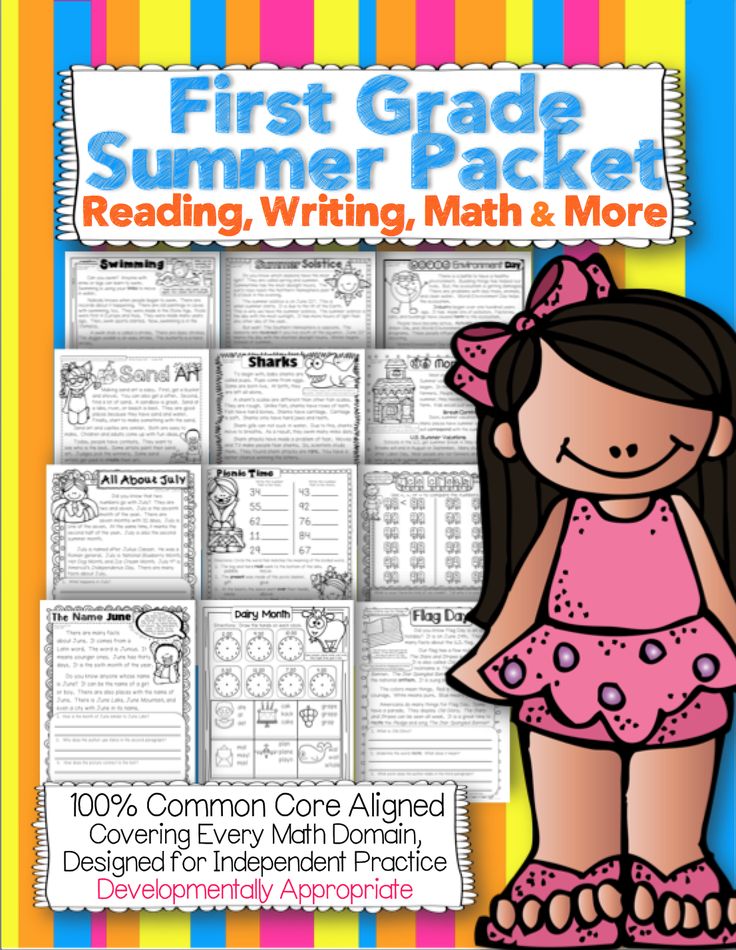 1.1.J: Produce and expand complete simple and compound declarative, interrogative, imperative, and exclamatory sentences in response to prompts.
1.1.J: Produce and expand complete simple and compound declarative, interrogative, imperative, and exclamatory sentences in response to prompts.- This goal covers the following objectives
- Unscramble the words to make a complete sentence
- Complete the sentence
- Determine the naming or action part of the sentence
- Statement, question, command, or exclamation
- L.1.2: Demonstrate command of the conventions of standard English capitalization, punctuation, and spelling when writing.
- L.1.2.A: Capitalize dates and names of people.
- This goal covers the following objectives
- Capitalize days and months
- Capitalize the names of people and pets
- Capitalize the pronoun "I"
- Capitalize the first letter of a sentence
- L.1.2.B: Use end punctuation for sentences.
- This goal covers the following objectives
- Statement, question, command, or exclamation
- Choose the right end mark
- Identify and use end marks
- Sentences: Answer is it a telling sentence or an asking sentence
- L.
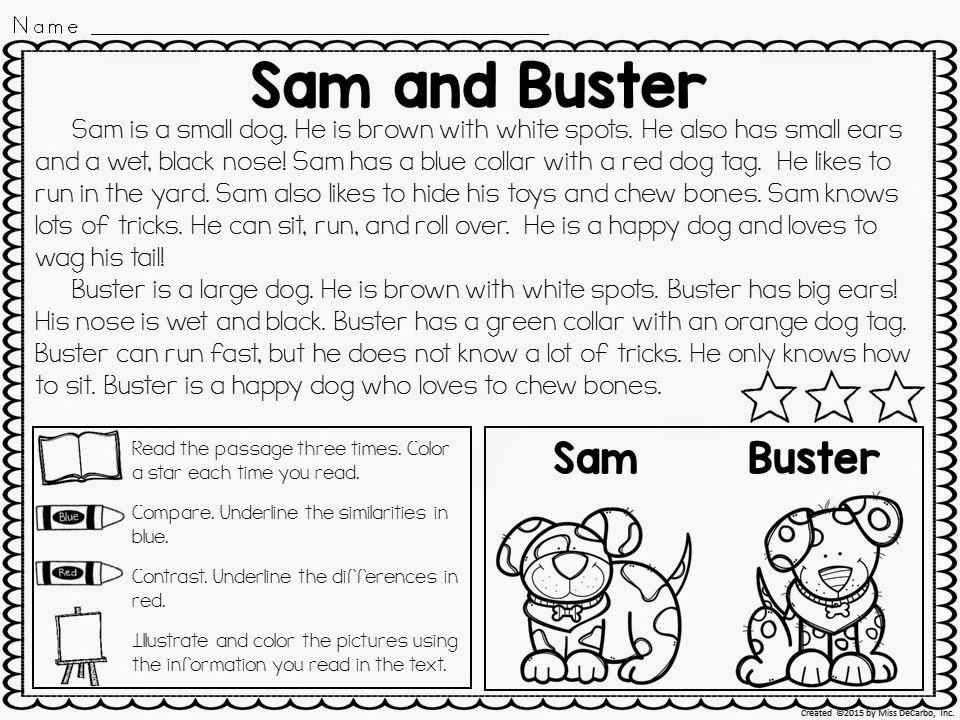 1.2.C: Use commas in dates and to separate single words in a series.
1.2.C: Use commas in dates and to separate single words in a series. - L.1.2.D: Use conventional spelling for words with common spelling patterns and for frequently occurring irregular words.
- This goal covers the following objectives
- Irregular plurals: select the word that matches the picture
- Form regular plurals with -s and -es
- Use singular and plural nouns
- Select the regular plurals word that matches the picture
- L.1.2.E: Spell untaught words phonetically, drawing on phonemic awareness and spelling conventions.
- This goal covers the following objectives
- Complete the word with the right digraph
- Complete the word to match the picture -ss, -ll, -ff, -zz, -ck
- Consonant blends and digraphs: Complete the word with the right final consonant blend
- Consonant blends and digraphs: Complete the word with initial consonant blend
- L.1.2.A: Capitalize dates and names of people.
- L.1.4: Determine or clarify the meaning of unknown and multiple-meaning words and phrases based on grade 1 reading and content, choosing flexibly from an array of strategies.
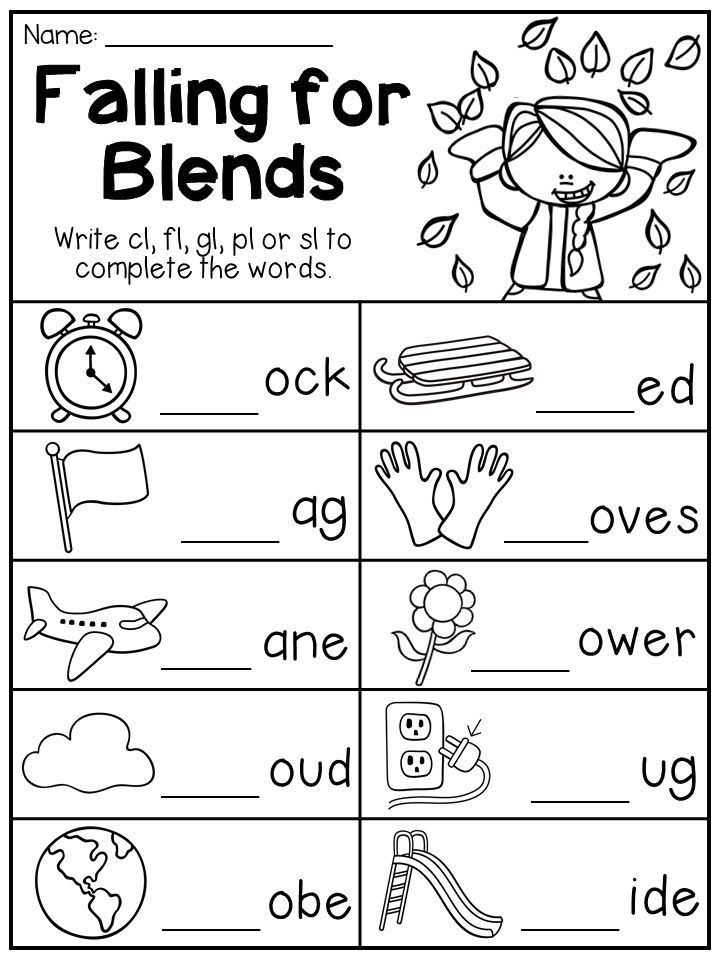
- L.1.4.A: Use sentence-level context as a clue to the meaning of a word or phrase.
- This goal covers the following objectives
- Context clues: Use context to identify the meaning of a word
- Multiple meaning words: Multiple meaning words with pictures
- Categories: Select which one is not like the others
- Sorting: Objects into categories
- L.1.4.B: Use frequently occurring affixes as a clue to the meaning of a word.
- This goal covers the following objectives
- Understand words with prefixes and suffixes
- Use words with prefixes and suffixes
- Match the -ed and -ing sentences to the pictures
- Sentences: Answer is it a telling sentence or an asking sentence
- L.1.4.C: Identify frequently occurring root words (e.g., look) and their inflectional forms (e.g., looks, looked, looking).
- This goal covers the following objectives
- Match the -ed and -ing sentences to the pictures
- Understand words with prefixes and suffixes
- Use words with prefixes and suffixes
- Context clues: Use context to identify the meaning of a word
- L.1.4.A: Use sentence-level context as a clue to the meaning of a word or phrase.
- L.
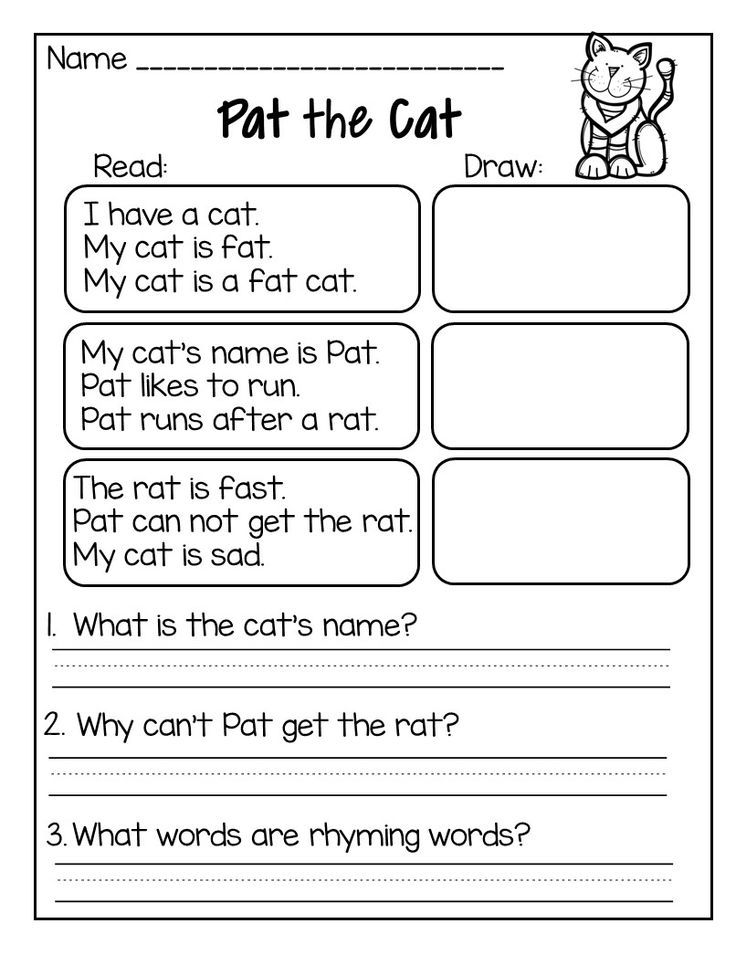 1.5: With guidance and support from adults, demonstrate understanding of word relationships and nuances in word meanings.
1.5: With guidance and support from adults, demonstrate understanding of word relationships and nuances in word meanings.
- L.1.5.A: Sort words into categories (e.g., colors, clothing) to gain a sense of the concepts the categories represent.
- This goal covers the following objectives
- Sort words into categories
- Categories: Select which one is not like the others
- Sorting: Objects into categories
- Use color words
- L.1.5.B: Define words by category and by one or more key attributes (e.g., a duck is a bird that swims; a tiger is a large cat with stripes).
- This goal covers the following objectives
- Meaning: Find the words with related meanings
- Which word is not like the others?
- Match synonyms
- Meaning: Describe the difference between related words
- L.1.5.C: Identify real-life connections between words and their use (e.g., note places at home that are cozy).
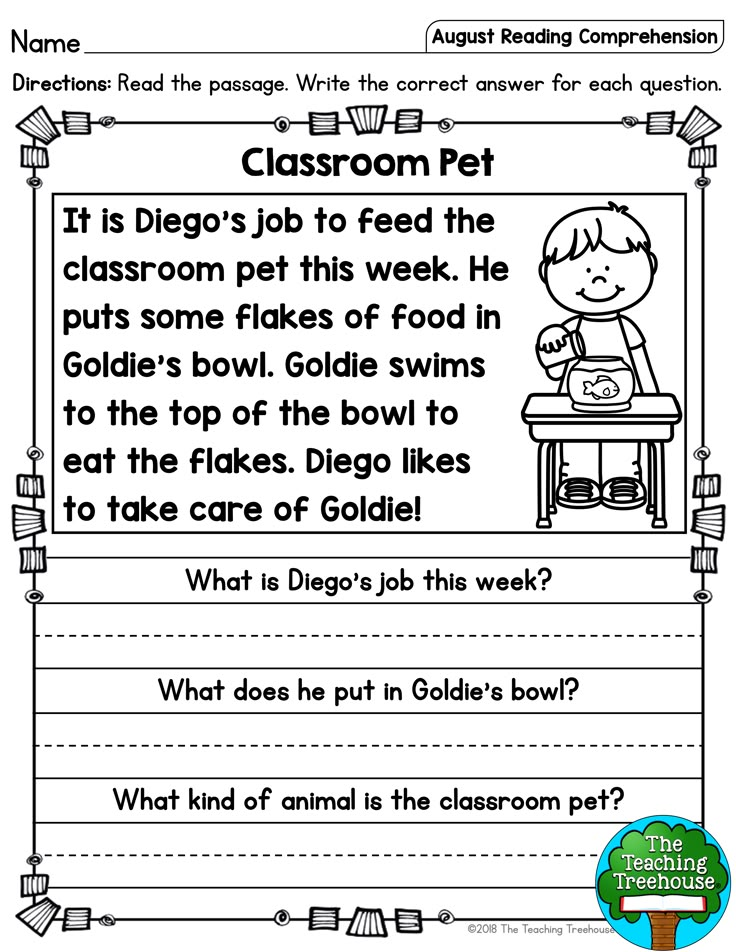
- This goal covers the following objectives
- Select the best preposition to match the picture
- Identify adjectives
- Use sense words
- Use action verbs
- L.1.5.D: Distinguish shades of meaning among verbs differing in manner (e.g., look, peek, glance, stare, glare, scowl) and adjectives differing in intensity (e.g., large, gigantic) by defining or choosing them or by acting out the meanings.
- This goal covers the following objectives
- Meaning: Order related words based on meaning
- Meaning: Describe the difference between related words
- Meaning: Find the words with related meanings
- Match synonyms
- L.1.5.A: Sort words into categories (e.g., colors, clothing) to gain a sense of the concepts the categories represent.
- L.1.6: Use words and phrases acquired through conversations, reading and being read to, and responding to texts, including using frequently occurring conjunctions to signal simple relationships (e.g., because).
- L.1.6: Use words and phrases acquired through conversations.
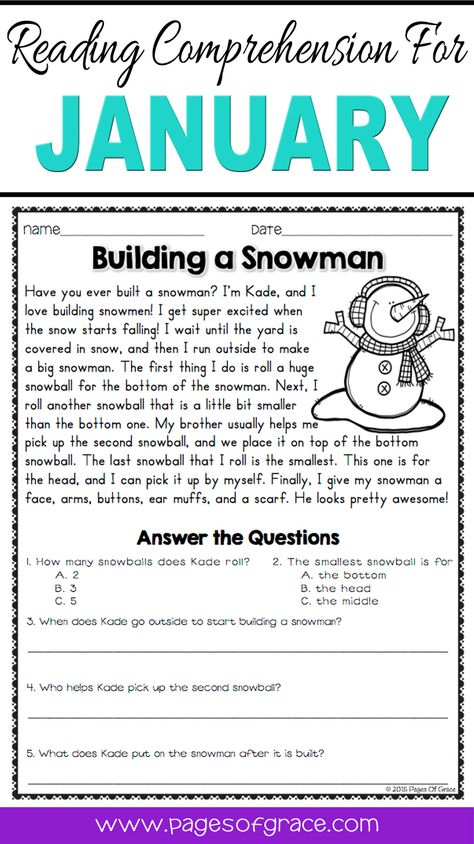 ..
..- This goal covers the following objectives
- Select the best preposition to complete the sentence
- Select the best preposition to match the picture
- Use sense words
- Meaning: Describe the difference between related words
- L.1.6: Use words and phrases acquired through conversations.
RF.1: Reading: Foundational Skills
- RF.1.1: Demonstrate understanding of the organization and basic features of print.
- RF.1.1.A: Recognize the distinguishing features of a sentence (e.g., first word, capitalization, ending punctuation).
- This goal covers the following objectives
- Capitalize sentences and the pronoun "I"
- Unscramble the words to make a complete sentence
- Find the complete sentences
- Find the complete sentence
- RF.1.1: Demonstrate understanding of the organization and basic features of print.
- RF.1.1.A: Recognize the distinguishing features of a sentence (e.g., first word, capitalization, ending punctuation).
- RF.1.2: Demonstrate understanding of spoken words, syllables, and sounds (phonemes).
- RF.
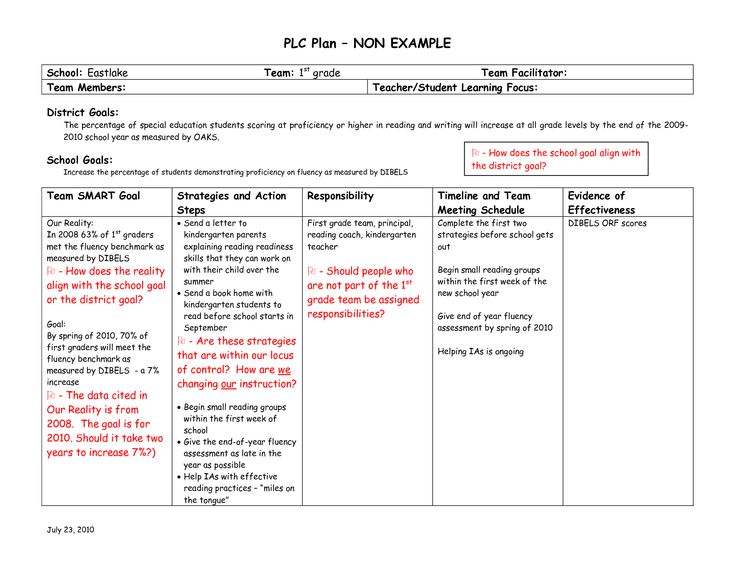 1.2: Demonstrate understanding of spoken words, syllables, and sounds (phonemes).
1.2: Demonstrate understanding of spoken words, syllables, and sounds (phonemes).- This goal covers the following objectives
- Put two syllables together to create a word: harder
- Determine which two words end with the same sound
- Determine which two words start with the same sound
- Syllables: Determine how many syllables does the word have
- RF.1.2.A: Distinguish long from short vowel sounds in spoken single-syllable words.
- This goal covers the following objectives
- Use spelling patterns to sort long and short vowel words
- Sort short and long vowel words
- Sort short and long vowel words
- Choose the word that has a different vowel sound
- RF.1.2.B: Orally produce single-syllable words by blending sounds (phonemes), including consonant blends.
- This goal covers the following objectives
- Consonant blends and digraphs: Fill in the missing consonant blend
- Blending and segmenting: Blend the sounds together to make a word
- Consonant blends and digraphs: Answer does the word end with a consonant blend
- Short a: Complete the short a word
- RF.
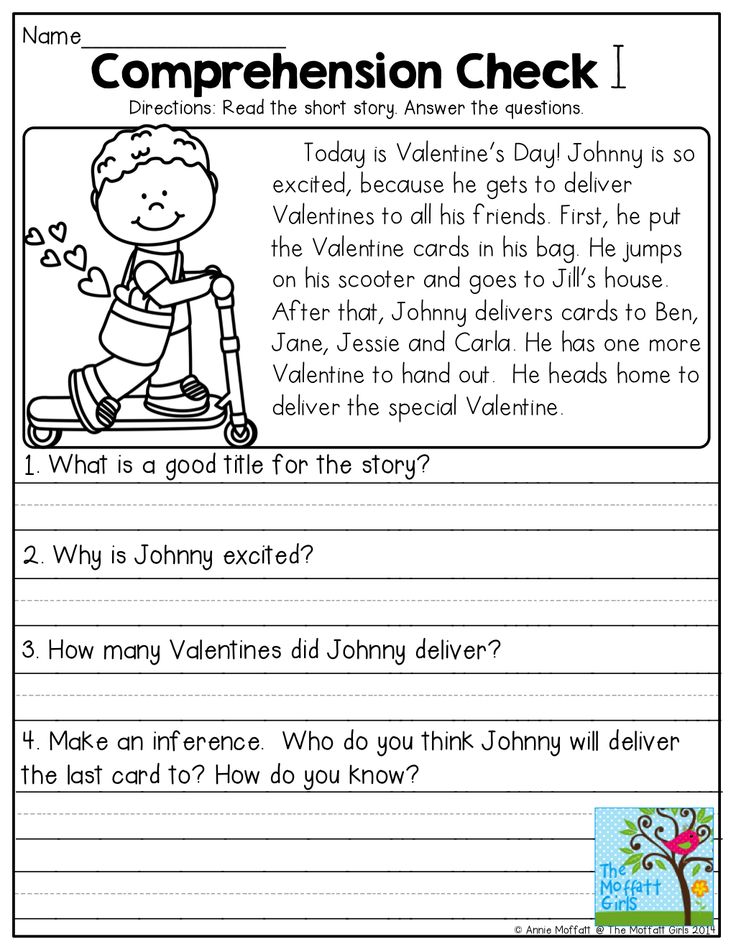 1.2.C: Isolate and pronounce initial, medial vowel, and final sounds (phonemes) in spoken single-syllable words.
1.2.C: Isolate and pronounce initial, medial vowel, and final sounds (phonemes) in spoken single-syllable words.- This goal covers the following objectives
- Complete the vowel team words
- Complete the word with the right r-controlled vowel: ar, er, ir, or, ur
- Complete the word with the right digraph
- Choose the correct digraph
- RF.1.2.D: Segment spoken single-syllable words into their complete sequence of individual sounds (phonemes).
- This goal covers the following objectives
- Put the sounds in order
- Identify each sound in a word
- Blending and segmenting: Blend the sounds together to make a word
- Blending and segmenting: Blend the sounds together to make a word
- RF.
- RF.1.3: Know and apply grade-level phonics and word analysis skills in decoding words.
- RF.1.3: Know and apply grade-level phonics and word analysis skills in decoding words.
- This goal covers the following objectives
- Complete the word with the right diphthong: oi, oy, ou, ow
- Complete the word with the right r-controlled vowel: ar, er, ir, or, ur
- Complete the sentence with the correct short vowel word
- Complete the word with the right short vowel
- RF.
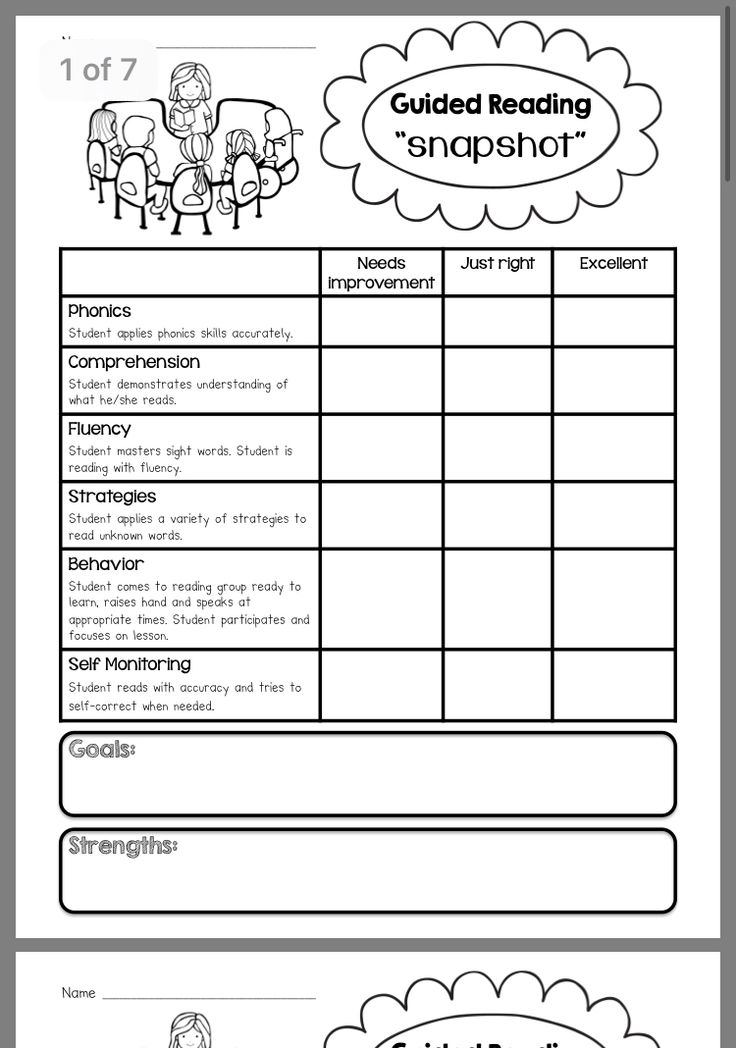 1.3.A: Know the spelling-sound correspondences for common consonant digraphs.
1.3.A: Know the spelling-sound correspondences for common consonant digraphs.- This goal covers the following objectives
- Consonant blends and digraphs: Sort by initial consonant blend or digraph
- Spell the digraph word
- Choose the correct digraph
- Complete the word to match the picture -ss, -ll, -ff, -zz, -ck
- RF.1.3.B: Decode regularly spelled one-syllable words.
- This goal covers the following objectives
- Choose the diphthong word that matches the picture
- Choose the r-control word that matches the picture
- Consonant blends and digraphs: Does the word end with a consonant blend
- Consonant blends and digraphs: Determine if the word start with a consonant blend
- RF.1.3.C: Know final -e and common vowel team conventions for representing long vowel sounds.
- This goal covers the following objectives
- Choose the vowel team sentence that matches the picture
- Complete the word with the right vowel team
- Complete the silent e words
- Use spelling patterns to sort long and short vowel words
- RF.
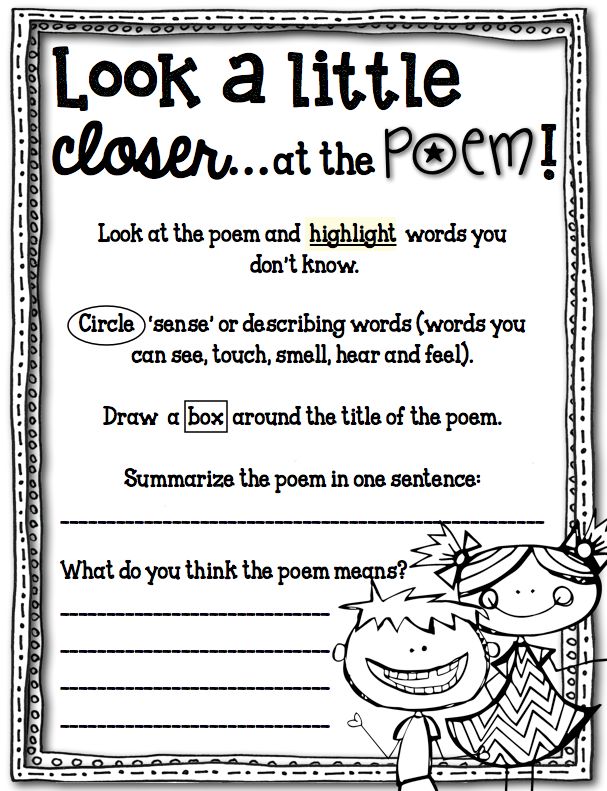 1.3.D: Use knowledge that every syllable must have a vowel sound to determine the number of syllables in a printed word.
1.3.D: Use knowledge that every syllable must have a vowel sound to determine the number of syllables in a printed word.- This goal covers the following objectives
- Put two syllables together to create a word: harder
- Put two syllables together to create a word: easier
- Syllables: Determine how many syllables does the word have
- Consonants and vowels: Finding vowels in words
- RF.1.3.E: Decode two-syllable words following basic patterns by breaking the words into syllables.
- This goal covers the following objectives
- Complete the sentence with a two-syllable word
- Complete the two-syllable words
- Put two syllables together to create a word: harder
- Put two syllables together to create a word: easier
- RF.1.3.F: Read words with inflectional endings.
- This goal covers the following objectives
- Match the -ed and -ing sentences to the pictures
- Complete the verb with the ending that you hear
- Select the sentence that tells about the past
- Select the sentence that tells about the present
- RF.
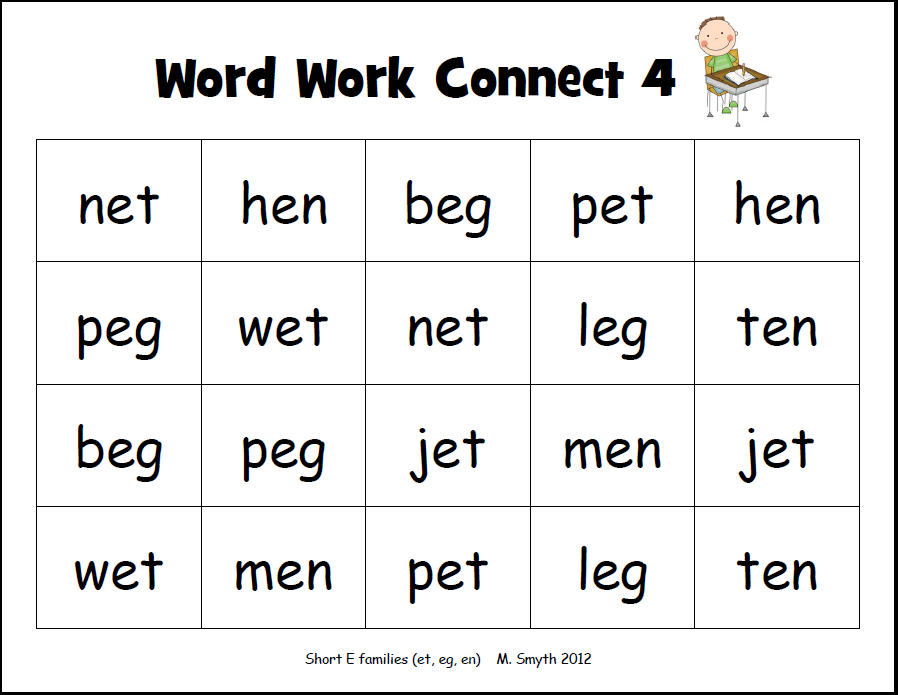 1.3.G: Recognize and read grade-appropriate irregularly spelled words.
1.3.G: Recognize and read grade-appropriate irregularly spelled words.- This goal covers the following objectives
- Complete the sentence with the correct sight word
- Choose the sight word that you hear
- Choose the sight word that you hear
- Choose the two sight words that are the same
- RF.1.3: Know and apply grade-level phonics and word analysis skills in decoding words.
- RF.1.4: Read with sufficient accuracy and fluency to support comprehension.
- RF.1.4: Read with sufficient accuracy and fluency to support comprehension.
- RF.1.4.A: Read grade-level text with purpose and understanding.
- This goal covers the following objectives
- What am I?
- Choose the vowel team sentence that matches the picture
- Complete the poem with a word that rhymes
- Complete the rhyme
- RF.1.4.B: Read grade-level text orally with accuracy, appropriate rate, and expression on successive readings.
- RF.1.4.C: Use context to confirm or self-correct word recognition and understanding, rereading as necessary.
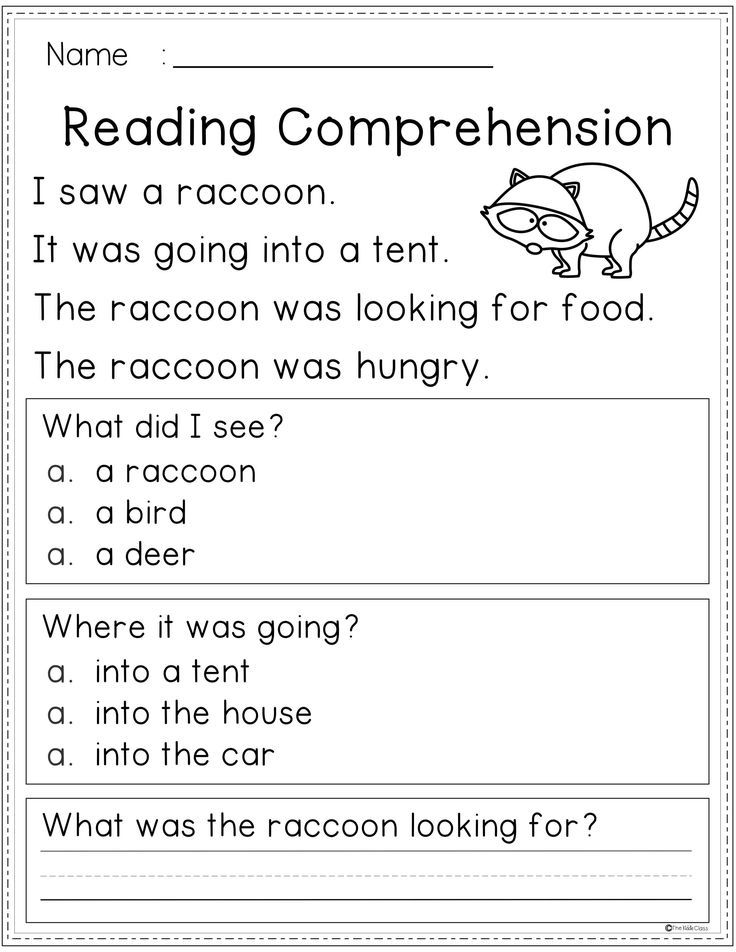
- This goal covers the following objectives
- Use sense words
- Use action verbs
- Complete the sentence with the correct sight word
- Complete the sentence with a two-syllable word
RL.1: Reading: Literature
- RL.1.1: Ask and answer questions about key details in a text.
- RL.1.2: Retell stories, including key details, and demonstrate understanding of their central message or lesson.
- RL.1.3: Describe characters, settings, and major events in a story, using key details.
- RL.1.4: Identify words and phrases in stories or poems that suggest feelings or appeal to the senses.
- RL.1.5: Explain major differences between books that tell stories and books that give information, drawing on a wide reading of a range of text types.
- RL.1.6: Identify who is telling the story at various points in a text.
- RL.1.7: Use illustrations and details in a story to describe its characters, setting, or events.
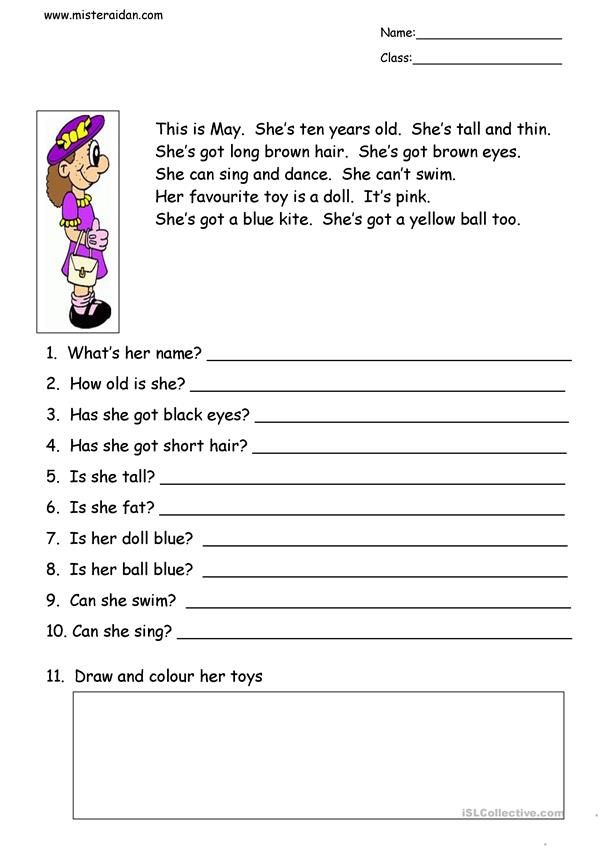
- RL.1.9: Compare and contrast the adventures and experiences of characters in stories.
- RL.1.10: With prompting and support, read prose and poetry of appropriate complexity for grade 1.
RI.1: Reading: Informational Text
- RI.1.1: Ask and answer questions about key details in a text.
- RI.1.2: Identify the main topic and retell key details of a text.
- RI.1.3: Describe the connection between two individuals, events, ideas, or pieces of information in a text.
- RI.1.4: Ask and answer questions to help determine or clarify the meaning of words and phrases in a text.
- RI.1.5: Know and use various text features (e.g., headings, tables of contents, glossaries, electronic menus, icons) to locate key facts or information in a text.
- RI.1.6: Distinguish between information provided by pictures or other illustrations and information provided by the words in a text.
- RI.
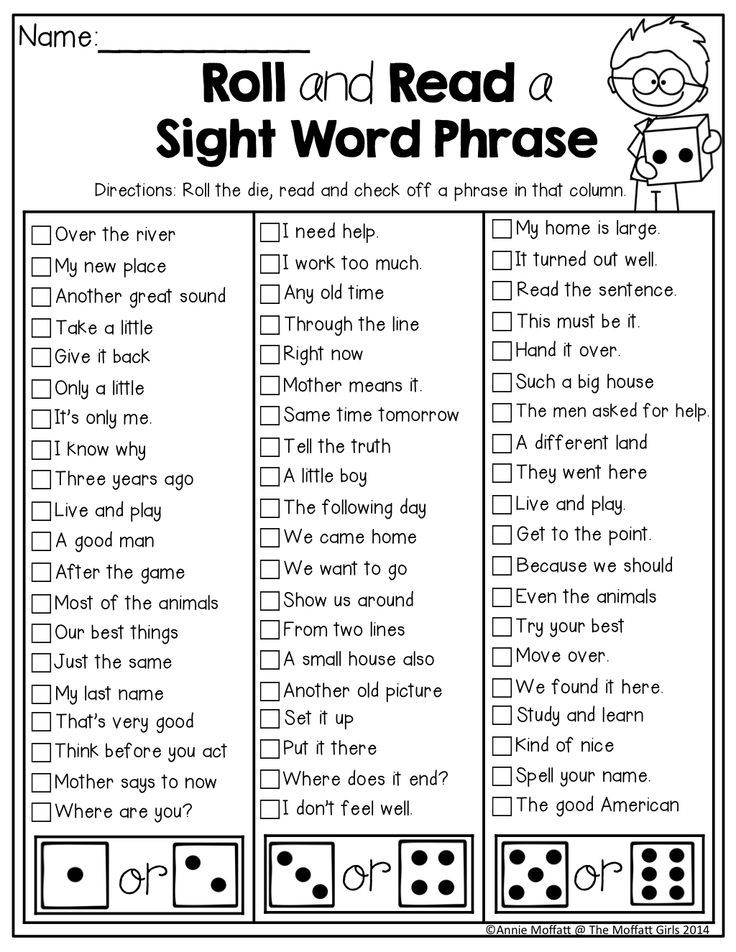 1.7: Use the illustrations and details in a text to describe its key ideas.
1.7: Use the illustrations and details in a text to describe its key ideas. - RI.1.8: Identify the reasons an author gives to support points in a text.
- RI.1.9: Identify basic similarities in and differences between two texts on the same topic (e.g., in illustrations, descriptions, or procedures).
- RI.1.10: With prompting and support, read informational texts appropriately complex for grade 1.
W.1: Writing
- W.1.1: Write opinion pieces in which they introduce the topic or name the book they are writing about, state an opinion, supply a reason for the opinion, and provide some sense of closure.
- W.1.2: Write informative/explanatory texts in which they name a topic, supply some facts about the topic, and provide some sense of closure.
- W.1.3: Write narratives in which they recount two or more appropriately sequenced events, include some details regarding what happened, use temporal words to signal event order, and provide some sense of closure.
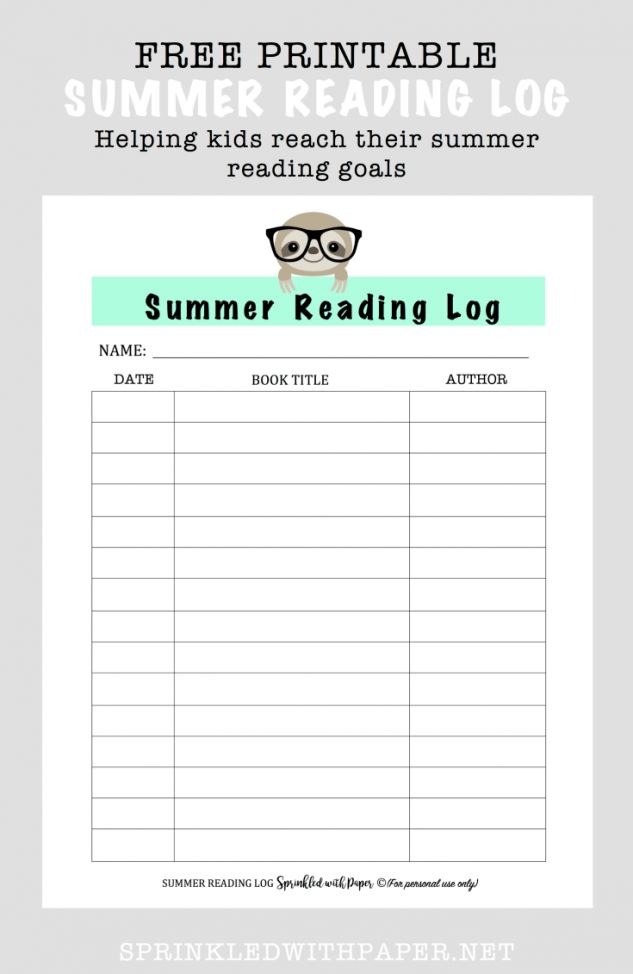
- W.1.5: With guidance and support from adults, focus on a topic, respond to questions and suggestions from peers, and add details to strengthen writing as needed.
- W.1.6: With guidance and support from adults, use a variety of digital tools to produce and publish writing, including in collaboration with peers.
- W.1.7: Participate in shared research and writing projects (e.g., explore a number of "how-to" books on a given topic and use them to write a sequence of instructions).
- W.1.8: With guidance and support from adults, recall information from experiences or gather information from provided sources to answer a question.
Special education teachers determine what children need for smart iep goals and how best to align common core state standards. Thank you for letting us be part of your special education classsroom.
The Complete Guide For Parents
1st grade reading is only the beginning of your child’s lifelong journey toward becoming an enriched, excited reader!
HOMER is here with the essential information you need to figure out how you can help your child succeed with their 1st grade reading adventures, as well as how to have fun with reading!
The Essential Goals Of 1st Grade Reading
Phonological Awareness
Your first-grader will begin developing their phonological awareness skills before they even reach kindergarten, but these are the sort of skills that will help them for the rest of their life.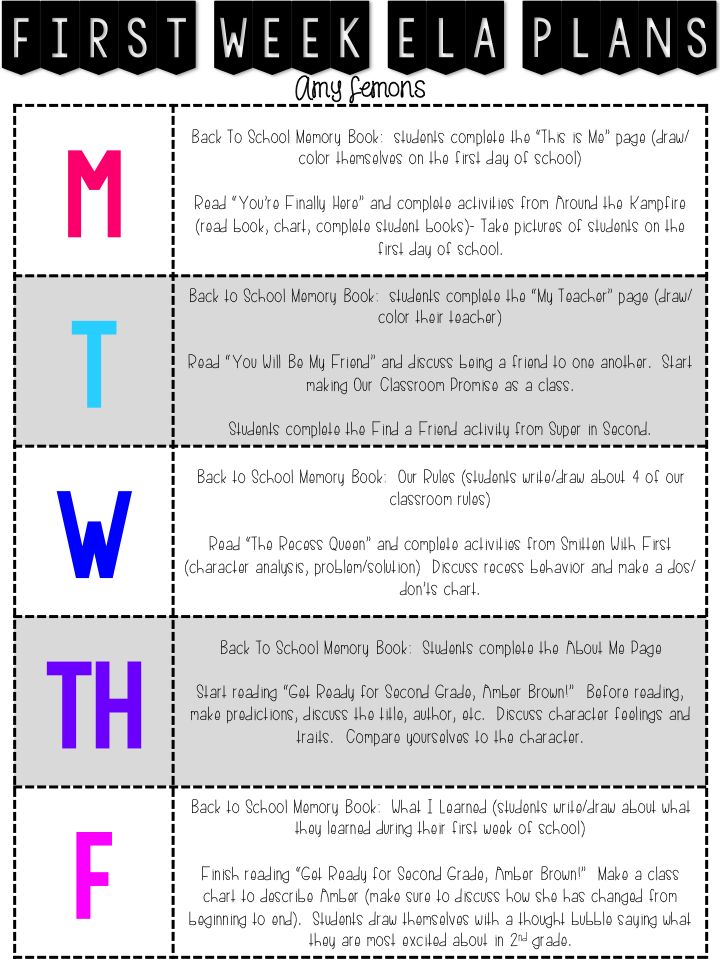
Building phonological awareness continues in first grade and means that your child understands how to manipulate, distinguish, and play with sounds and words.
They’ll learn how to tell the difference between spoken words, syllables within words, and random sounds. They will begin to isolate syllables in words and blend syllables to make words. Finally, they’ll learn to isolate individual sounds within words and blend sounds to make words.
These skills also mean they’ll have the ability to read words, both old and familiar, using their knowledge of phonics and their decoding skills.
With their strong grasp on phonological awareness, they’ll also have a higher success rate with spelling new words that are phonetically regular. This means even if they’ve never seen the word “rim” or “blink,” they’ll likely be able to spell it correctly on their first attempt.
Print Concepts
Advancing their knowledge of print concepts means your child isn’t just leveling up their reading — they’re expanding what they know about the boundaries of reading and writing!
Your first-grader will move beyond homogenous letter writing (writing in only uppercase or lowercase letters).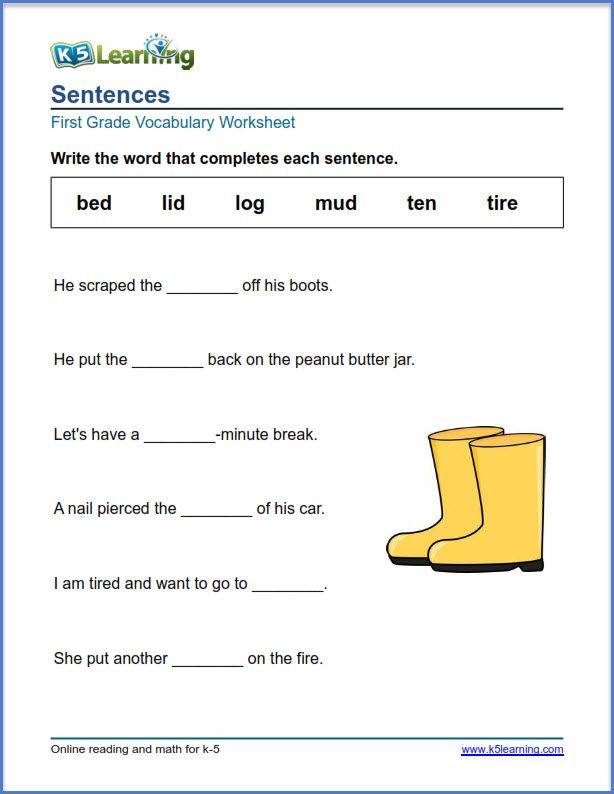 Now they understand basic rules for capitalization along with punctuation rules. Periods, exclamation marks, question marks — your child will learn them all!
Now they understand basic rules for capitalization along with punctuation rules. Periods, exclamation marks, question marks — your child will learn them all!
They may also be able to reliably pinpoint the emotional context of a sentence based on the ending punctuation. They’ll know when a sentence is supposed to be informative, inquisitive, or exciting.
Additionally, your child will learn that when it comes to books, there are many places to go to figure out the “roadmap” of a story! They’ll know where to find information about the book — like its title — and where they can find the name of the author or illustrator.
They will understand that nonfiction books often have captions with extra facts and that some books have glossaries that can help them to understand the meaning of challenging words.
That’s not all! They’ll learn how to make predictions about a text based on its cover, title, or illustrations. Afterward, they’ll be able to compare and contrast their initial guess with what they actually read.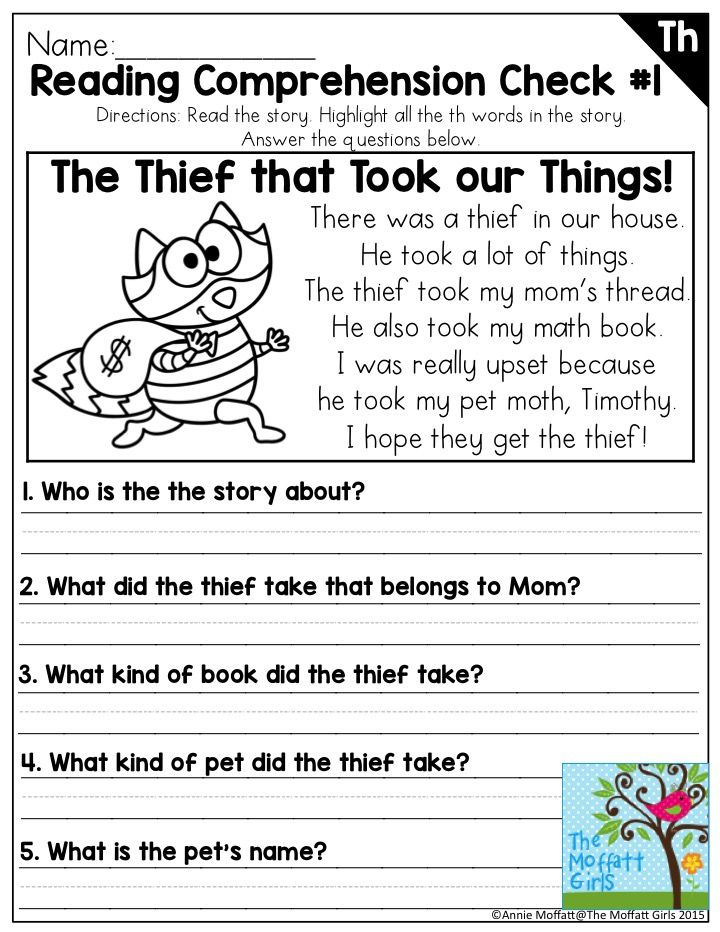
Although your child may be able to draw some conclusions about what they read, remember they’re still young. Their insights may only work at a surface level.
This is perfectly OK! Even asking basic questions about the text read will help reinforce the idea that it is important to think about what we read.
Phonics
Phonics may sound a lot like phonological awareness. The two are related but not identical!
While phonological awareness refers to a generalized awareness of sounds and how they work within words (and outside of them as broader sounds), phonics deals specifically with letter sounds.
Phonics involves linking letters and combinations of letters with specific sounds. Children with a strong foundation in phonics can correctly and consistently link alphabetic letters with associated sounds to decode unfamiliar words.
At the 1st-grade reading level, children are expected to use phonics to decode phonetically regular words.
They will learn how to read words with short vowels (like cap and cub), words that use a silent E to create long sounds (like cape and cube), words with beginning and ending blends (like skunk and twist), and words with consonant digraphs (like mash and ship).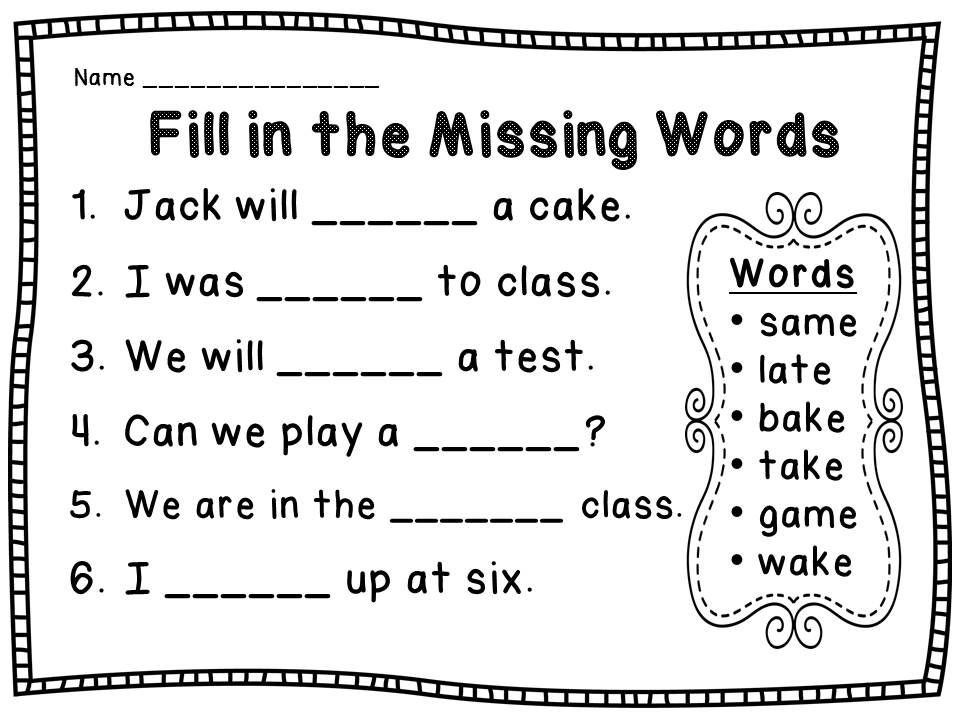
Through phonics, your child will begin to understand how essential vowels are to word formation. No matter how you slice it, every English word has at least one vowel sound. In fact, every syllable has a vowel sound — and only one vowel sound!
They’ll use these skills to break apart longer words into smaller, more manageable syllables. As your child becomes more comfortable decoding words, they’ll be able to apply the emotional inflection of a sentence (usually conferred by punctuation) while reading words.
Fluency
Fluent reading doesn’t mean your child can read anything on the market. It simply means that they are developing the ability to read with acceptable speed, accuracy, and expression at their determined reading level.
While reading, first-graders will appropriately utilize context clues and illustrations to aid the fluency of their reading. They’ll be able to understand almost anything that appears on the page (as long as the book is in their reading level!)
Their reading will feature emotional expression and, when applicable, slower moments when they need to sound out new, grade-appropriate words.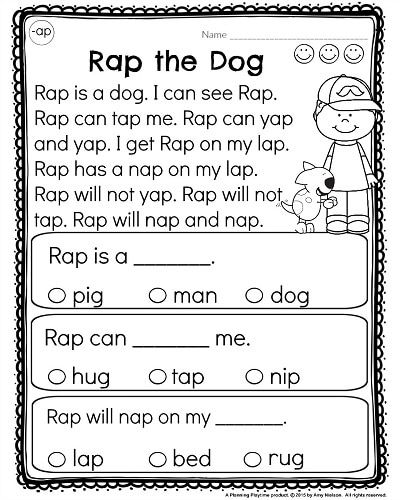 The next time they revisit the story, they should read the word a little bit smoother!
The next time they revisit the story, they should read the word a little bit smoother!
Comprehension
Your first-grader is starting to get a sense of how big the world around them really is (and how much bigger their imagination can be!).
This means that through reading and learning, they’ll gain a little bit more baseline knowledge of all sorts of subjects. This is what reading comprehension is all about!
Comprehension will help them remember what they’re reading as well as consider the goals of the text in front of them (is it for informing or entertaining?).
While reading, they’ll learn to identify words or phrases that suggest specific feelings, compare and contrast the experiences of different characters, and pinpoint the main character in the story.
They’ll be able to draw conclusions from these different sources of information and express opinions about what they uncover in the text. They may also begin to relate these thoughts and ideas to their own experiences.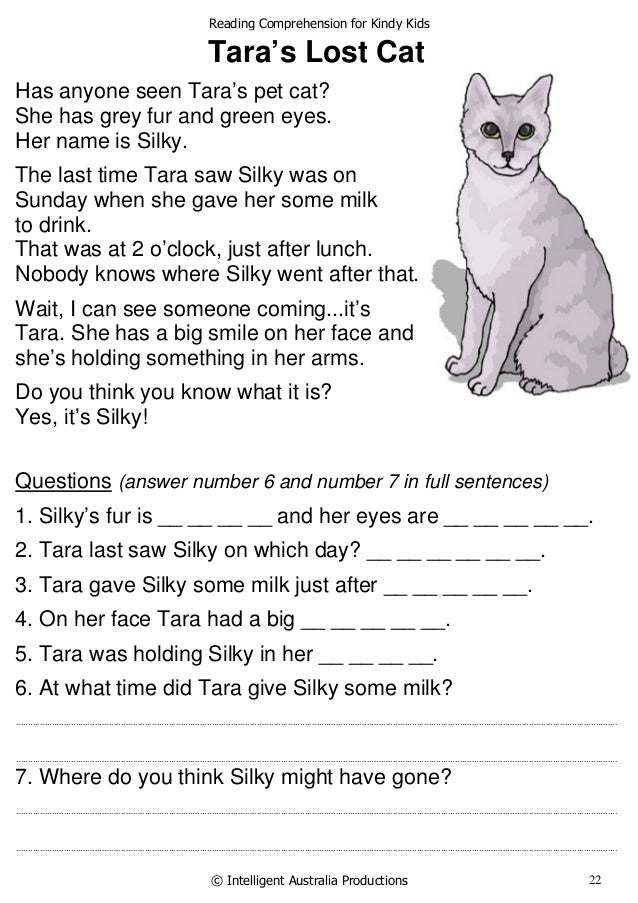
Skills Needed To Master 1st Grade Reading
Before beginning 1st grade reading, your child will need to know some things to jump-start their new learning adventures.
Firm Grasp On Letters
Ideally, your child will come into first grade with a strong grasp of the alphabet!
They should be able to not only recognize letters but correctly pair letters with the sounds they make. They should be able to differentiate between uppercase and lowercase letters, as well.
Your child may already know how to spell or read a few consonant-vowel-consonant (CVC) words, too. If not, there’s no need to worry! This is a skill they’ll work on more as they go through first grade.
For now, focusing on your child’s letter and letter-sound practice will get them primed for 1st grade reading.
Ability To Pinpoint Evidence
While reading, your child will probably express opinions about a character or plot point of the story. By first grade, they may be able to explain what gives them those opinions — in other words, identify evidence in a text.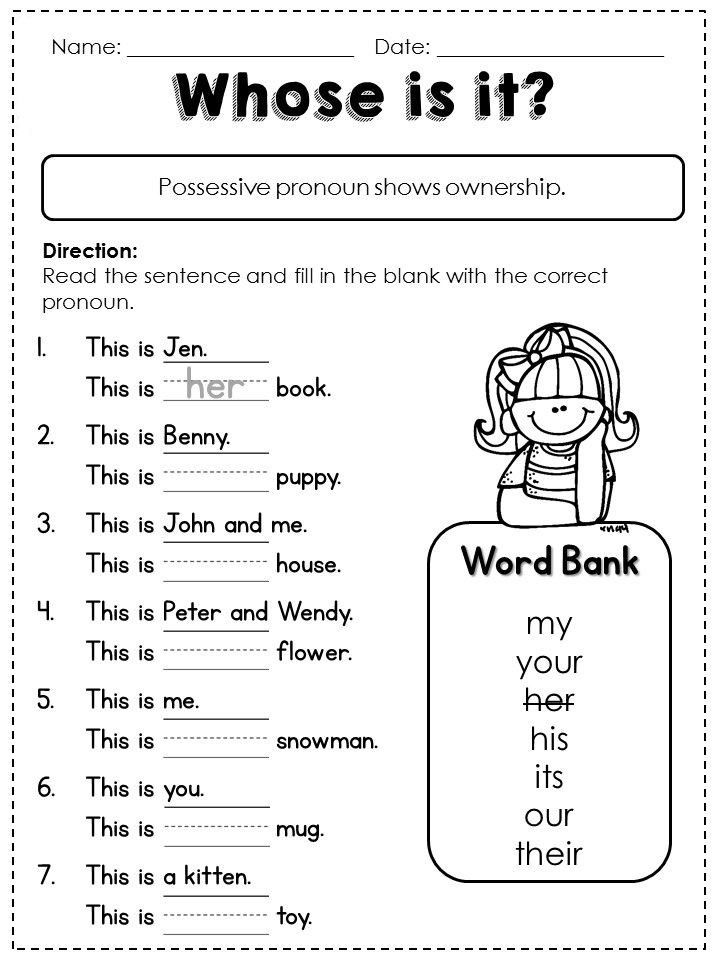
We encourage you to give your child an extra nudge in the right direction by asking how they know what they know. You may be surprised to hear what they say!
This also gives you a chance to double-check that your child knows a text can give them all the evidence they need to support their conclusions.
Using Words To Express Ideas
What better way to use all the new words your child is learning than by expressing themselves?
The best way to help your child learn to use words to express ideas — and, as a result, prepare them for first grade — is to read and talk to them. Doing both allows you to help your child develop not just a love of reading but a strong desire to be a reader.
Talking with children also enhances their receptive language (their ability to understand what is said to them) and their expressive language (their ability to express their ideas accurately and thoughtfully).
It’s simple but so effective: taking the time to read to and have real conversations with your child can help their reading development so much!
Master 1st Grade Reading With HOMER
The skills your child learns as a first-grader will help them on their reading journey for the rest of their life.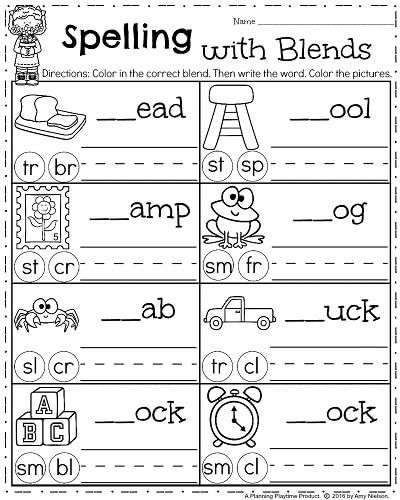 Not only that, but there is so much fun and excitement waiting for them just beneath those colorful covers!
Not only that, but there is so much fun and excitement waiting for them just beneath those colorful covers!
Getting the hang of the skills needed for 1st grade reading will take time, but with practice and patience, we know your child will get where they need to go!
And may they never forget that reading is one of the most exciting things they’ll ever learn how to do! It opens up a world of possibilities and imagination, all ready for their exploration anytime and anywhere.
We at HOMER hope that this guide has you feeling ready and relaxed about what your child will achieve during 1st grade reading lessons.
We’re always here to lend a helping hand in your child’s learning journey, especially through our Learn & Grow app. We want your child to feel like the whole world is at their fingertips, and with our personalized reading activities, it can be!
Author
Semantic reading: types, methods and techniques of teaching.
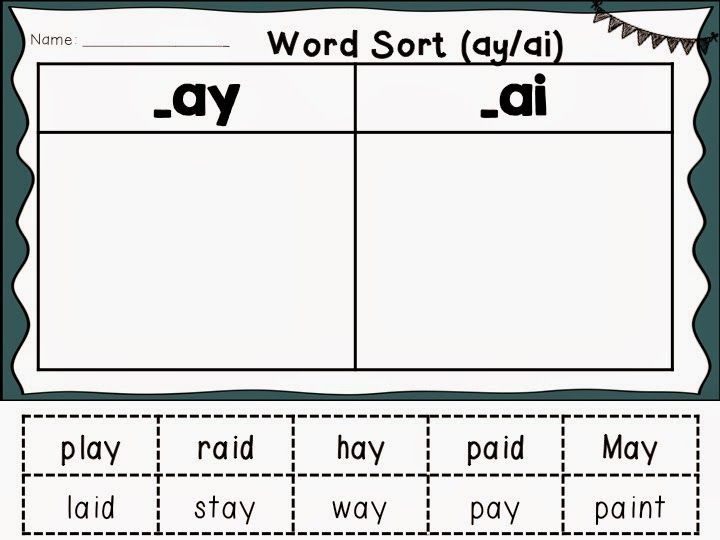 Stages of formation of skills and abilities of semantic reading
Stages of formation of skills and abilities of semantic reading Semantic reading is such a quality of reading, in which an understanding of the informational, semantic and ideological aspects of the work is achieved.
The purpose of semantic reading is to understand the content of the text as accurately and fully as possible, to catch all the details and practically comprehend the extracted information.
When a child reads really thoughtfully, then his imagination is sure to work, he can actively interact with his internal images. A person himself establishes the relationship between himself, the text and the surrounding world. When a child masters semantic reading, then he develops oral speech and, as the next important stage of development, written speech.
In the process of teaching semantic reading, younger students develop the following skills:
- understand text;
- analyze;
- compare;
- modify;
- generate (create texts for your goals and objectives).
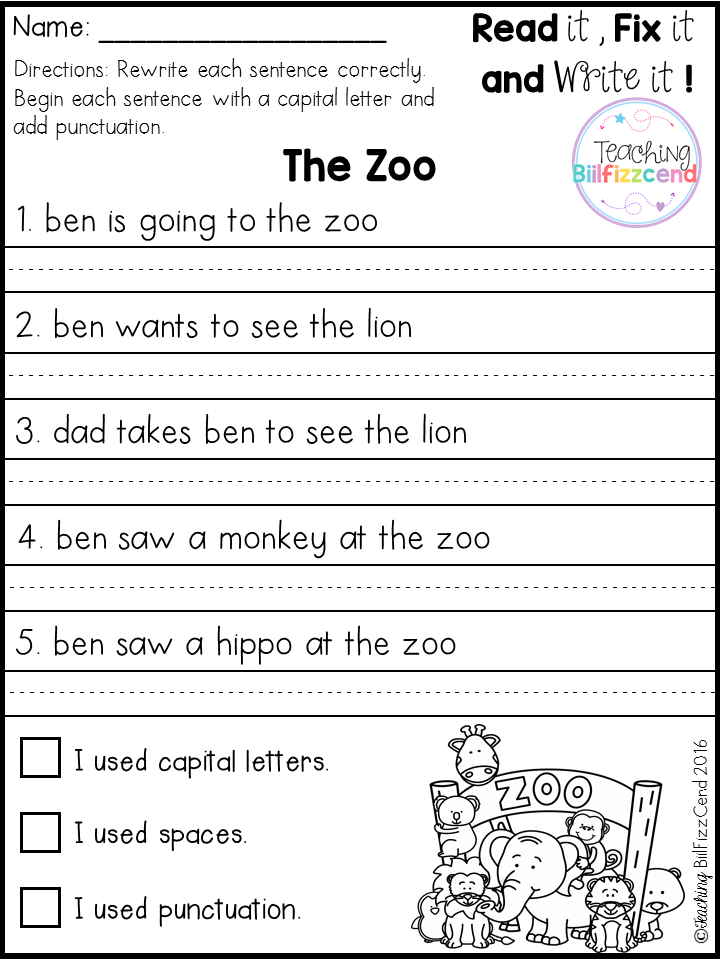
Types of semantic reading.
There are the following types of reading:
- viewing;
- trial;
- studying;
- reflective.
Viewing reading is a type of semantic reading in which a specific information or fact is searched for.
Introductory reading is the type by which the main meaning, key information is determined in the text.
Learning reading is a type of semantic reading, in which, depending on the goal, complete and accurate information is searched for and its further interpretation. From everything written, the main thing is singled out, and the secondary is omitted.
Reflective reading is the most thoughtful reading. During this process, the reader anticipates future events by reading the headline or as they read.
Methods and techniques for teaching semantic reading.
The following methods and techniques are used to teach semantic reading:
Development of the ability to analyze the task.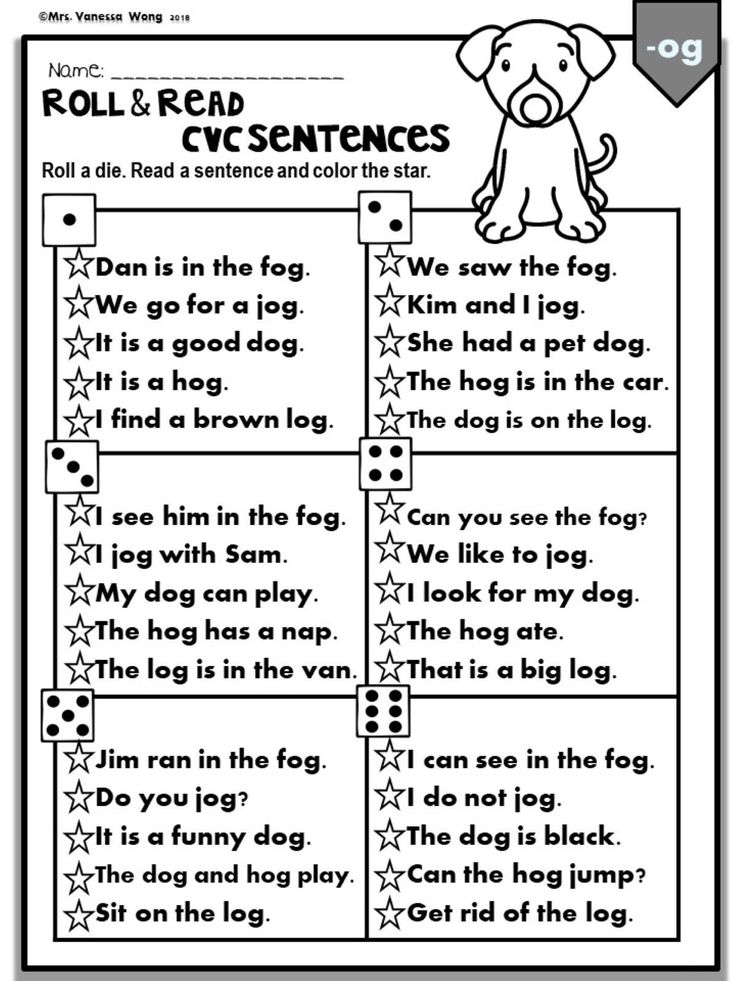
Search for keywords in the task and the ability to read the instructions.
Answers to the questions (both written and oral).
Determining the sequence of events in the read text.
Formulation of simple conclusions after reading the text.
Converting the read text into a table.
Comparison of illustrative material with textual information.
Explaining various situations with the help of the read text.
The ability, based on the text read, to prove their point of view, to refute any statements.
Finding the necessary information in various information sources: dictionaries, reference books, encyclopedias, etc.
Stages in the formation of skills and abilities of semantic reading.
The work on the formation of the skills and abilities of semantic reading must be carried out in the system, complicating the techniques and methods of reading and processing information from class to class.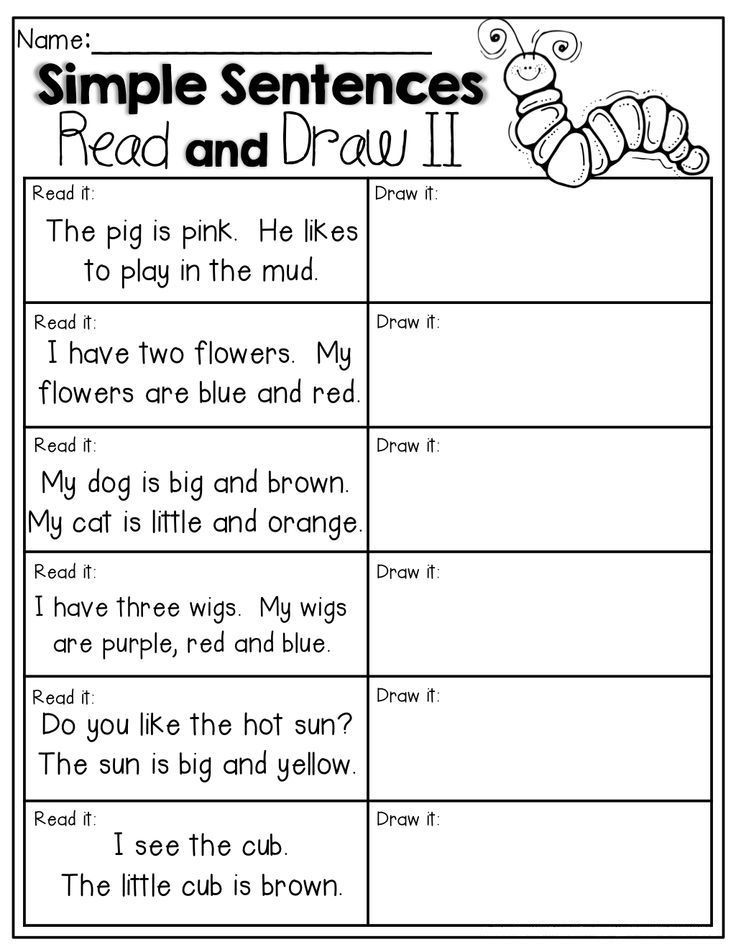 What are the main steps to skip?
What are the main steps to skip?
Working with unfamiliar words (explaining unfamiliar words).
The teacher must determine whether the children understand the meaning of individual words. He needs to clarify this while reading, so that the students develop the skill of independently highlighting unfamiliar words, the meaning of which needs to be deciphered. Such words can be underlined and searched for their interpretation in the dictionary after reading, or the meaning is explained by the teacher.
A novice reader often does not clearly realize that there is a word incomprehensible to him in the text. Such a word slips in the context, leaving the illusion of clarity. Any teacher has come across this phenomenon by asking children a question after reading the text: “What words were incomprehensible?”. As a rule, children do not call such words. Finding out the meanings of a number of words from the read text convinces us that many of them were left out of comprehension.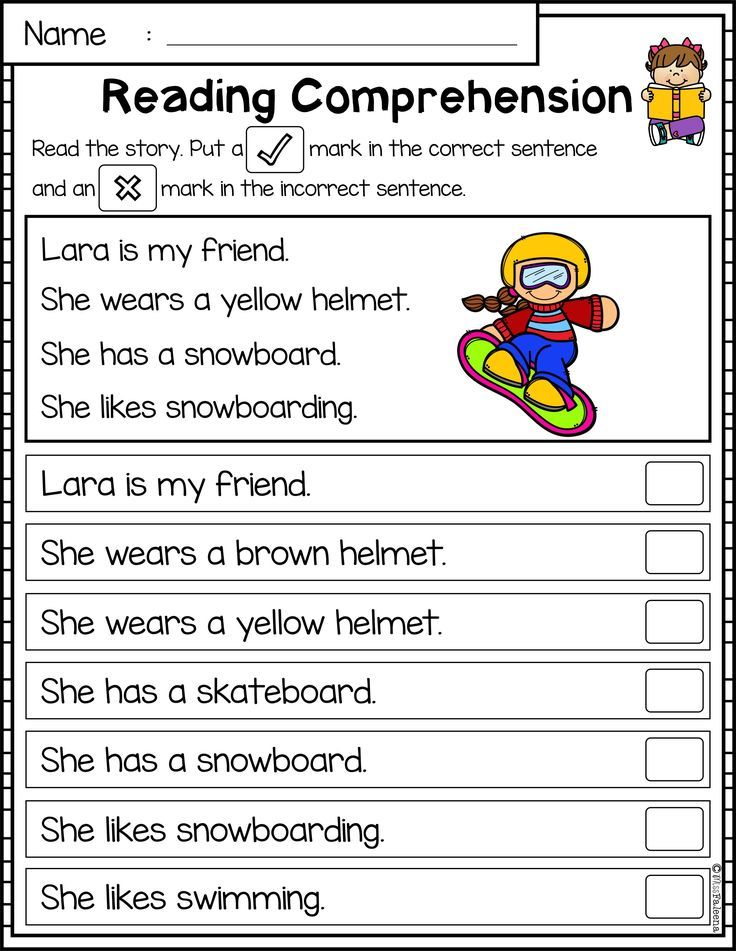 The practice of parsing words that exists at school is not effective enough, as children sometimes do not understand words that are very simple at first glance. Therefore, without excluding vocabulary work before reading, it is important for children to create an attitude towards independent selection of incomprehensible words when reading and finding out their meanings. In the method of teaching text comprehension, the emphasis is placed on the fact that every word the child does not understand is like a red traffic light for him, preventing further movement.
The practice of parsing words that exists at school is not effective enough, as children sometimes do not understand words that are very simple at first glance. Therefore, without excluding vocabulary work before reading, it is important for children to create an attitude towards independent selection of incomprehensible words when reading and finding out their meanings. In the method of teaching text comprehension, the emphasis is placed on the fact that every word the child does not understand is like a red traffic light for him, preventing further movement.
| Example Vitaly Bianchi "Hare, Kosach, Bear and Spring" Read the concepts and interpretations of words and phrases. Color the pairs with the appropriate color. |
At the first stages of working with the text, it is necessary to interrupt reading to clarify words that are incomprehensible to children.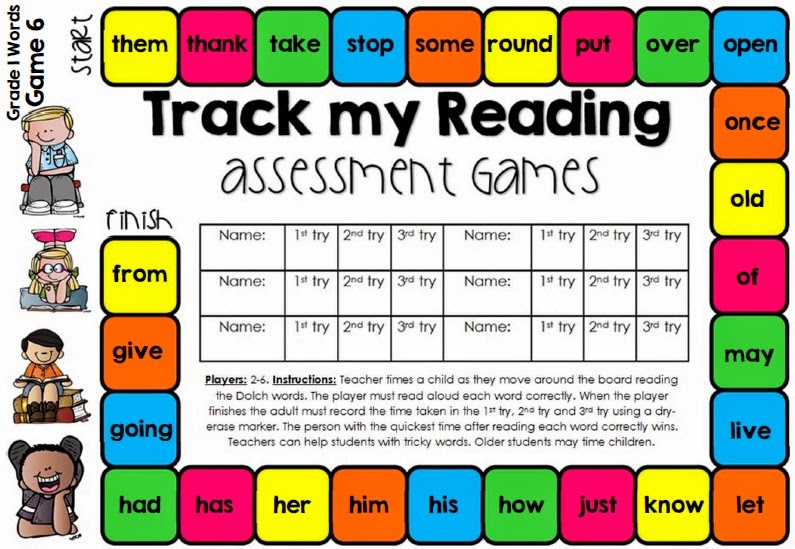 Gradually, students get used to underlining incomprehensible words while reading. Then these words are discussed: is it possible to understand the word from the context or should a dictionary be used.
Gradually, students get used to underlining incomprehensible words while reading. Then these words are discussed: is it possible to understand the word from the context or should a dictionary be used.
Working with keywords.
In any written material, there are certainly keywords, without which the meaning of the work is lost. The teacher should help students find them and explain the need for application and the meaning that they carry. It will be interesting to work with keywords in this form: A teacher or a student reads a story, story or something else. Next, the teacher asks the children what main words they could highlight, and writes them down on the board, and the children in a notebook. After that, it is proposed to reproduce the read text using these keywords. You can write down such words as you read.
Comprehension of the text is seriously affected by inattention to the key, most important words in the text. Sometimes the meaning of the entire text depends on one word, and without a “hook” for this word, it is impossible to understand the text correctly.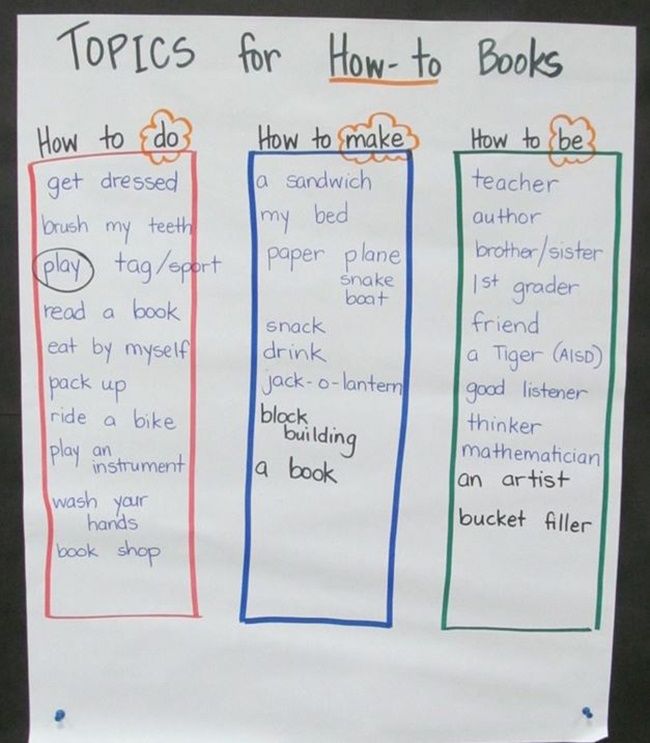
It is necessary to draw the attention of children to such words when reading any text.
| Example Skrebitsky "White coat" Underline in the passage from the text the words that explain why the author called his text that way. The morning was quiet, the night before poured a lot of snow. The forest became white, shaggy. In an instant, our bunny in the snow-covered bushes disappeared. That's when he needed a white coat! |
Working with words-images.
It is impossible to enjoy reading a literary text without a sensitive attitude to words-images or artistic means found by the author of the work. Acquaintance with words-images, in which the secrets of the beauty of the text are hidden, begins with the concept of comparison. Comparison allows you to make the image that arises in the reader more vivid, complete, voluminous, but with a novice reader there is no need to discuss literary concepts, since this is not the main thing in understanding, the main attention should be paid to enriching the figurative range with the help of artistic means used by the author.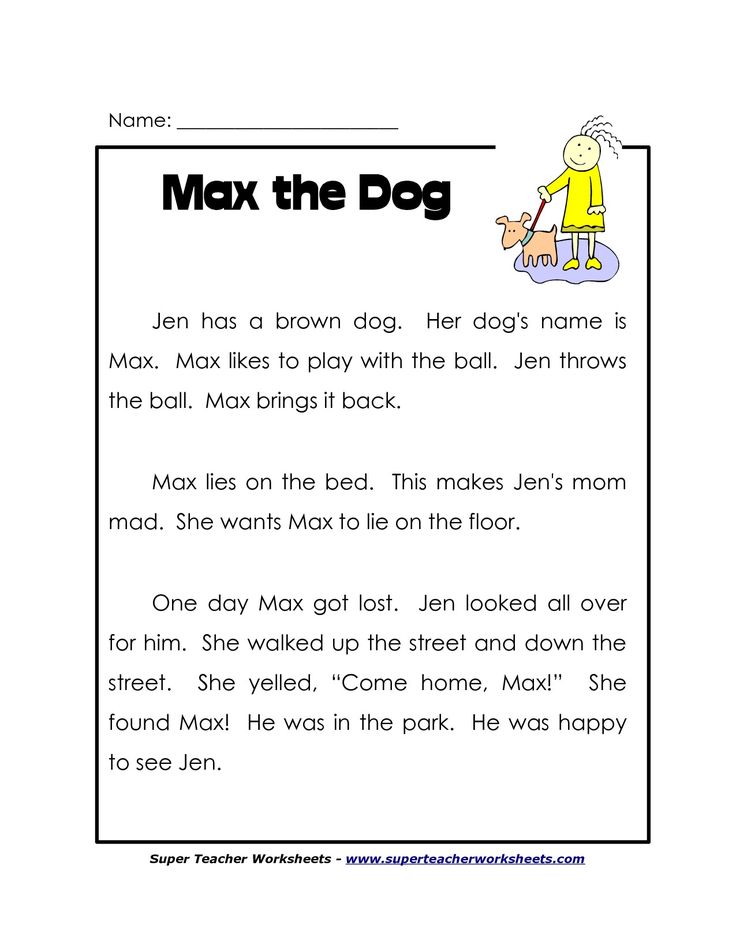
It is necessary to pay attention not only to words-images, but also to sounds, parts of words, forms or order of words.
Working with polysemous words.
Find well-known words in a different, unusual usage.
| The fork or knife must be handled very carefully because they are sharp. The mustard was so spicy that Vanya had tears in her eyes. Alyosha caught a cold and therefore did not go out with the guys. When Anna Ivanovna went out into the alley, the hooligans were gone. |
Working with phraseological units.
1. Replace the highlighted words in the sentence with phraseological units.
| Example Julia argued with her friend for a long time what to give Vera for her birthday. Scientists worry and warn (sound the alarm): the earth is threatened by an ecological catastrophe. |
2. Determine which phraseological unit is suitable for this text.
| Example The dacha was located in a picturesque grove, in a very convenient place: a river flowed nearby (two steps away), and it was very close to the station (at hand). |
3. Make up a dialogue using phraseological units:
| Example - Did you solve a physics problem for a long time yesterday? - Yes, for a very long time. Did you decide right away? - For a long time ... (puzzled), but without the help of my older sister I could not do anything. |
The story of the proposal.
Read the sentence, think about it and write a short story about it. The principle of compiling a story is the unfolding of textual information.
| Example And then I felt so annoyed and so angry that I threw this diary behind a bookcase that was in our classroom. The parent meeting was approaching. Mom said that if everything is fine with my grades, then on Saturday we will go to the park. And I had a deuce in singing. I really did not want Maria Ivanovna to put this two in her diary, because then goodbye to the park. And when Maria Ivanovna was collecting her diaries, I didn't give her mine. At a big break, the boys and I ran into sports. Gym look newer exercise equipment. When we returned, I saw that my diary was lying on the desk and the deuce was standing like a pretty one in it. |
Application of the “dialogue with the author of the text” method.
Dialogue with the author of the text occurs as a result of active reading of textual information in order to understand the "mysteries" of the text, to discern the author's position, to realize one's attitude to this position. The dialogue often begins already when getting acquainted with the title of the work, and ends with an independent search for answers to questions that remained unresolved in the text. If we talk about the purposeful use of this method for educational purposes, it can be divided into several stages:
- looking for something that is not very clear in the text and formulating questions;
- predict the answers to the questions that have arisen and predict the further content of the text;
- self-test (we check our assumptions by checking them with the text).
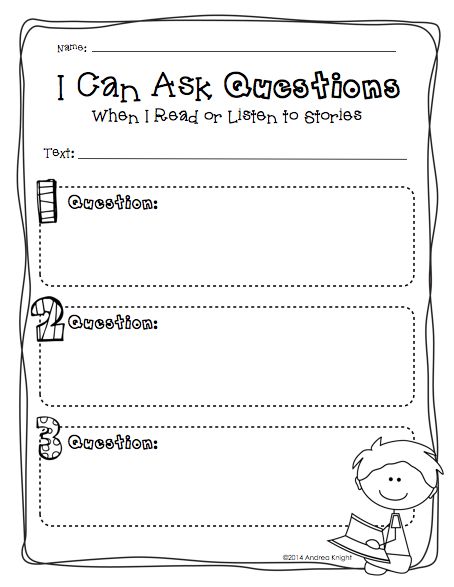
Methodists consider the “dialogue with the author of the text” method to be the most significant at the stage before reading (work with the title) and during the reading of the text, as it activates the processes involved in understanding. After such a dialogue, it is much easier for the reader to move on to the analysis of those thoughts and feelings that the author wanted to share with the reader when creating his work.
Predicting the content of the text by heading sets the reader up for the perception of textual information.
In order for the dialogue to be meaningful and complete, the reader needs to do a variety of work in the course of reading: find direct and hidden author's questions in the text, ask their own questions, ponder assumptions about the further content of the text, check whether they coincide with the author's intention, turn on the imagination.
| Example A. The lesson begins with students thinking about the meaning of the title of the work: when do we talk about conscience? Probably when someone did something not very plausible. Something in this act makes us wary, to think about why this happened. According to conscience, did the person act? Should he have done otherwise? Why in some situations people are called shameless? These and similar questions arise when the reader tries to predict, anticipate the presentation of events in the text, i.e. thinks about what he will learn when getting acquainted with the work. Next comes the initial reading of the text. This is a very crucial moment in the lesson, because. it is at the first acquaintance with the text in the process of gradual immersion in it that a lot of questions arise that you want to find the answer in the work itself. How can this really happen in a dialogue lesson? The beginning of the work: "Nina Karnaukhova did not prepare a lesson . After reading this episode, the question immediately arises: why? Why didn't you prepare a lesson? Why did you decide not to go to school? Naturally, a chain of assumptions follows: I didn’t prepare a lesson because my head hurt, I was too lazy, I didn’t cope with the task, I sat down for lessons too late, etc.; decided not to go to school because... “But so that acquaintances would not accidentally see how she hangs out with books around the city during the working day, Nina sneaked into the grove.” After reading the episode, a natural question arises: how does a person feel who does something on the sly? Apparently very uncomfortable. He is all in tension, there is a desire to become invisible. When you do something furtively, it becomes ashamed. Probably, Nina, stealthily making her way into the grove, did not feel well. At such a moment, you involuntarily feel sorry for a person. I really don't want to be in his place. Let the children for some time, putting forward their assumptions, compare themselves with the hero of the work. This will help them in the future to better understand this situation, to analyze it in more detail. At this stage, younger students emotionally evaluate the situation, correlate it with their life experience. This happens every time you read an episode. At this stage, there is no analysis of the text in the full sense of the word. After all, this is the first reading, but it is carried out in a dialogue lesson by gradually “immersing” in the text, in the process of “talking with the author of the text”. Children should be able to independently find questions hidden in the text, stop reading when there are opportunities to predict further content. The task of the teacher at the beginning of teaching a dialogue with the author of the text is to stop reading when there is a direct or hidden question in the text and organize probable prediction, and in the course of reading, check the predictions of children. |
Development of reader's imagination.
Many difficulties in understanding and memorizing the text are associated with undeveloped imagination. The development of the reader's imagination involves working on both recreative and creative imagination.
You should train to “turn on” the imagination on small texts containing 1-2 figurative elements that are easy to recreate. Gradually, the number of such elements can be increased, proceeding to the reproduction of whole pictures. The task is to present what is being described and reproduce your ideas orally or in writing, in words or colors.
What methodological techniques can activate the reader's imagination?
Verbal and graphic drawing will be effective, especially on the material of those works that do not immediately generate visual images.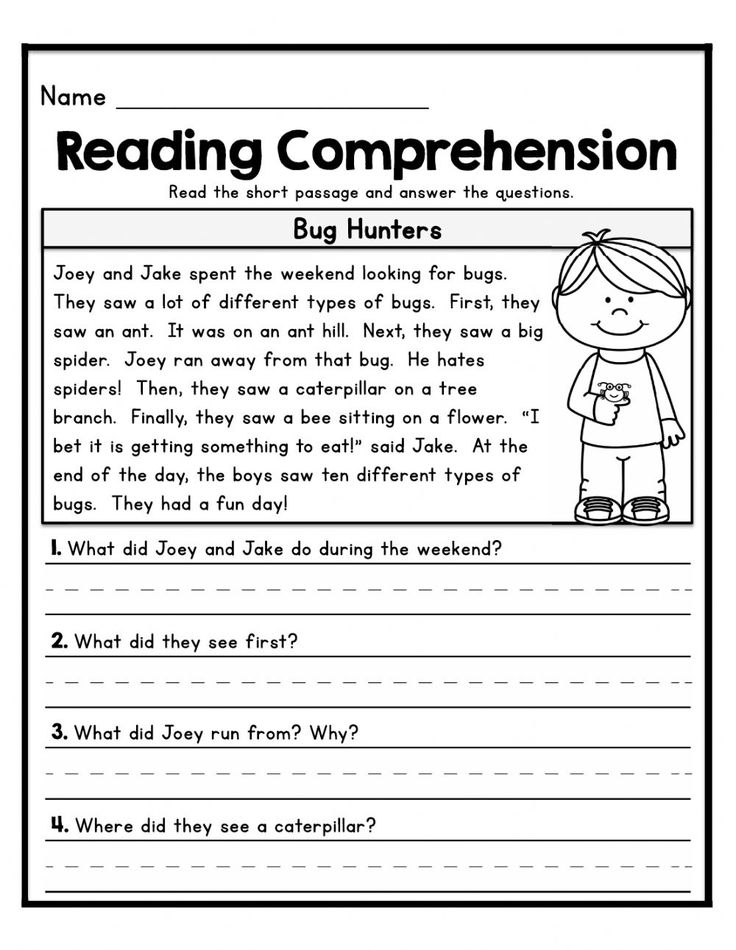 This applies to lyrical poems, texts saturated with complex psychological analysis or with an abundance of landscape sketches.
This applies to lyrical poems, texts saturated with complex psychological analysis or with an abundance of landscape sketches.
Work with illustrations by professional artists, their examination and analysis also plays a huge role.
Drawing up a filmstrip, a cartoon script, constructing literary characters from paper or plasticine, interior elements will also contribute to the "awakening" of the imagination.
We should not forget about the importance of such techniques as staging or dramatization, both of individual episodes and of the entire work. During this work, children will have to re-read the text more than once, paying attention to the details of the artistic space and time, portrait characteristics, and descriptions of the behavior of the characters.
If possible, you need to draw the attention of a novice reader to how the author, with the help of words, helps us not only “see” pictures of the artistic world, but also “hear” the sounds of nature, the human voice, “breathe” the aroma of a forest or a warm summer evening.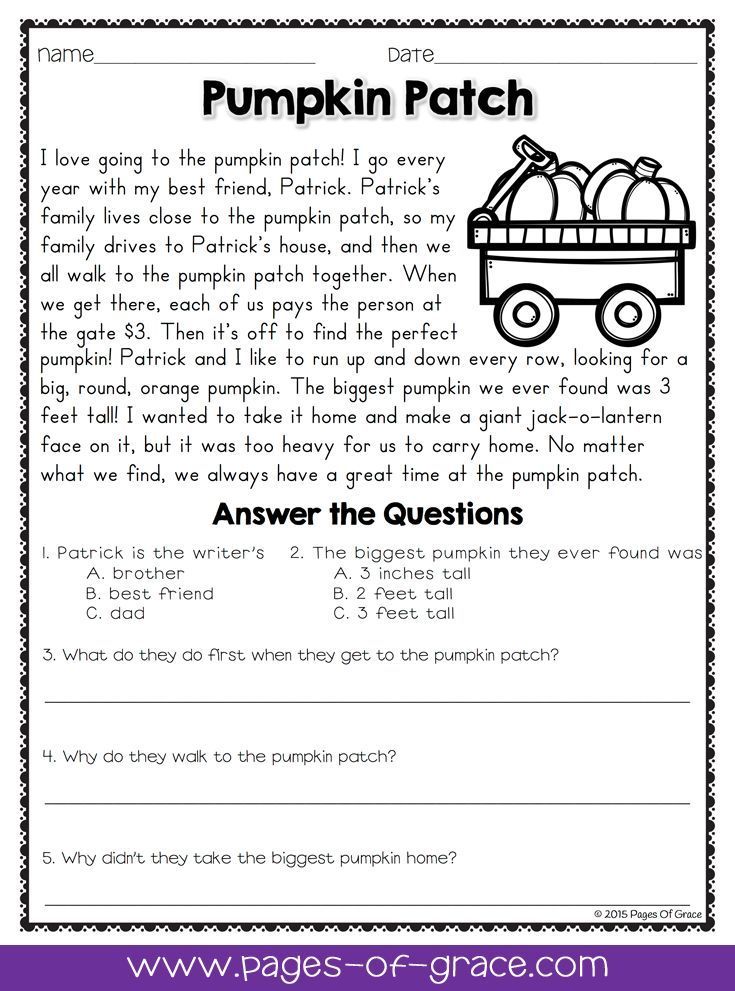
To develop creative imagination, you can use the following tasks: come up with your heroes, your adventures, another ending for the work.
By teaching how to work with text, it is possible to form the initial forms of cognitive and personal reflection:
- if you consider how the text is printed, you can easily find books with poetry;
- by the name of the author, one can assume the subject and genre of the work;
- illustrations help distinguish between fairy tales and stories;
- the title helps to understand the theme and the main meaning of the book;
- how many works are in the book, and which ones, you can find out by the table of contents or content.
Consciousness of reading.
Reading comprehension involves the formation of the following skills:
- identify words and expressions in the text, the meaning of which is not clear, and be aware of the need to clarify their meaning;
- use footnotes and school explanatory dictionary;
- answer questions on the content with the words of the text;
- determine the emotional nature of the text;
- highlight key (the most important for reading understanding) words;
- rely on the author's remarks to characterize the characters;
- determine the motives of the characters' behavior by choosing the correct answer from a number of proposed ones;
- be able to predict the content of the text to be read;
- be aware of the author's and one's own attitude to the characters;
- formulate the topic of a short text;
- work with the title of the text: choose the most accurate title from all those offered, independently title the text, predict the content by the title and make statements according to the given title;
- identify semantic and emotional overtones;
- determine the idea of the work by choosing from a number of proverbs the one that most accurately expresses the main idea;
- find the main idea formulated in the text.
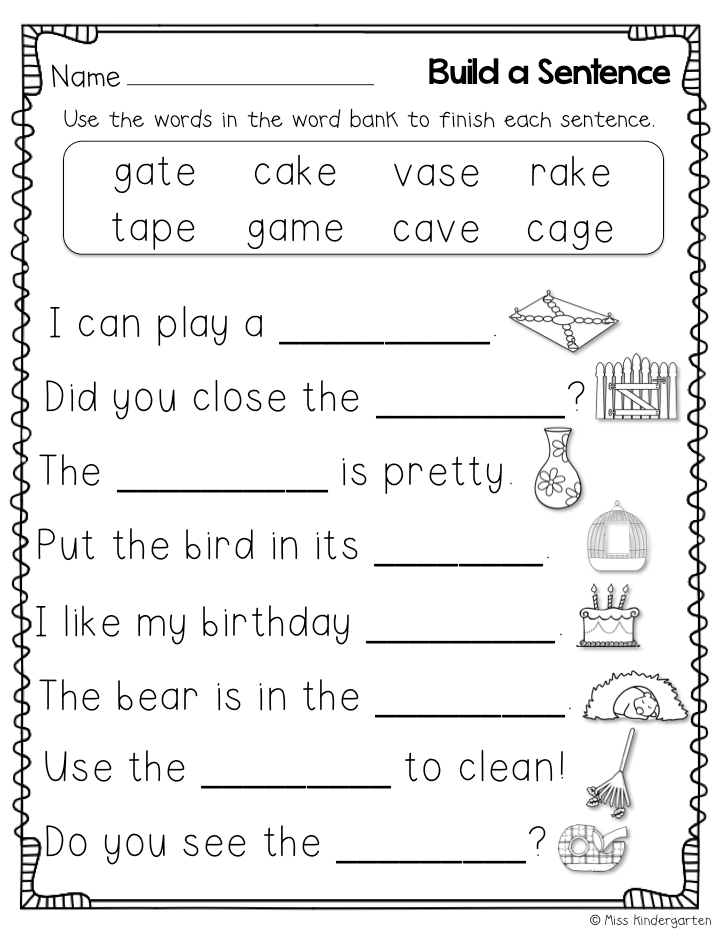
To test reading comprehension, offer different tasks to different students.
| Example Wonderful tree. The children arranged a holiday in the forest for birds and animals. On New Year's Eve, they decorated the Christmas tree with berries. The children tied pieces of bread to the upper branches. Carrots were attached to the lower branches. A head of cabbage was stuck under the tree in the snow. In the morning flocks of elegant birds flew in. They chirped happily, treated themselves to gifts. In the evening, two hares fussed under the tree near the head of cabbage. They ate tasty cabbages and sweet carrots. |
Task 1. Identify and tick off an item that is not mentioned in the story.
Task 2. Answer the question: For whom did the children dress up the Christmas tree?
Task 3.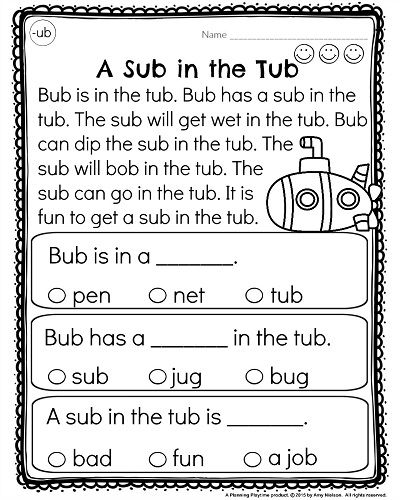 Make a picture plan for retelling the text;
Make a picture plan for retelling the text;
Task 4. Underline the sentence expressing the main idea of the text. To test reading comprehension, it is good to use deformed text.
| Example Hazel. There are many nuts among the carved foliage of the hazel. Each nut has a tight core, tasty and nutritious. Ripe [berries, fruits, nuts] - an incomparable delicacy, pick - and in the back! Just remember: many inhabitants of nature [fight, feed, throw] hazelnuts. Jays, nuthatches and [wolves, foxes, squirrels] hide them in reserve. Badgers and wild boars graze on them. [In summer, winter, autumn] nuts will save many of our furry and feathered friends from starvation. That is why it is necessary to protect the hazel, because they replenish the innermost pantries of the forest. |
Semantic reading presentation.
| Download presentation |
Parent meeting “FORMING READING SKILLS IN FIRST GRADE SCHOOL STUDENTS.
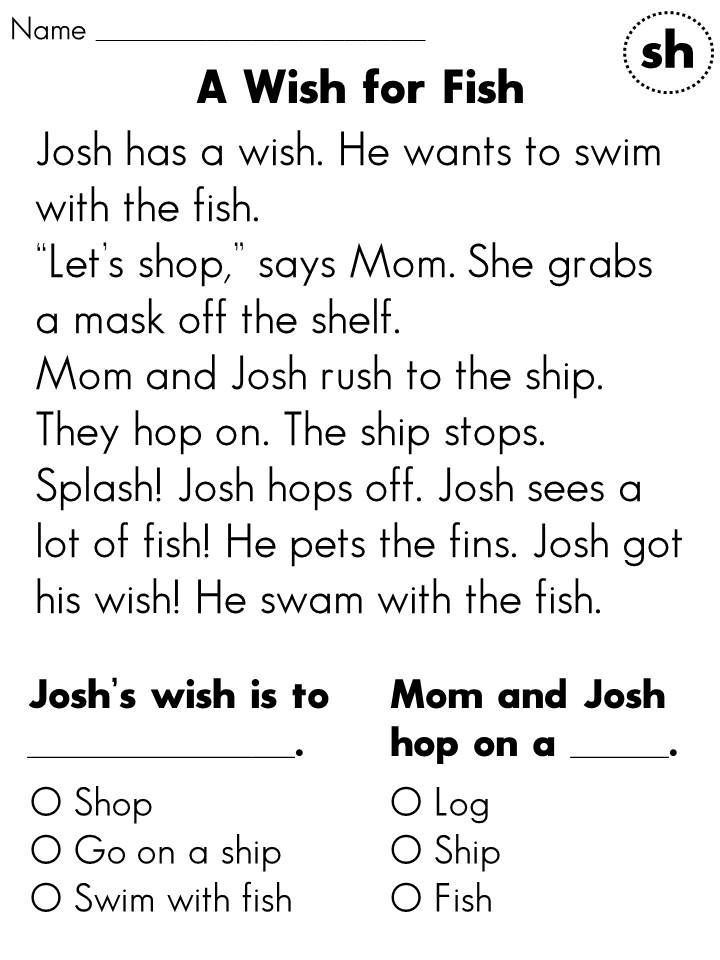 ADVICE TO PARENTS"
ADVICE TO PARENTS" Parent meeting in the 1st grade
MAOU "Secondary School No. 44", Perm
Class teacher -Yarina N.S.
Grade 1a, 2021
FORMATION OF READING SKILLS IN FIRST GRADE STUDENTS.
ADVICE TO PARENTS»
Goals. To help parents realize the value of children's reading as a means of education and upbringing of schoolchildren, as a guarantee of their life destiny; to acquaint parents with the results of the development of reading skills of students in the class.
Experience shows that students who do not read well are doomed to failure in middle and high school, where the educational material increases many times over. In addition, in the process of reading, working memory and attention stability are improved, on which mental performance depends.
It often happens that a child knows all the letters, can read, but does not want to.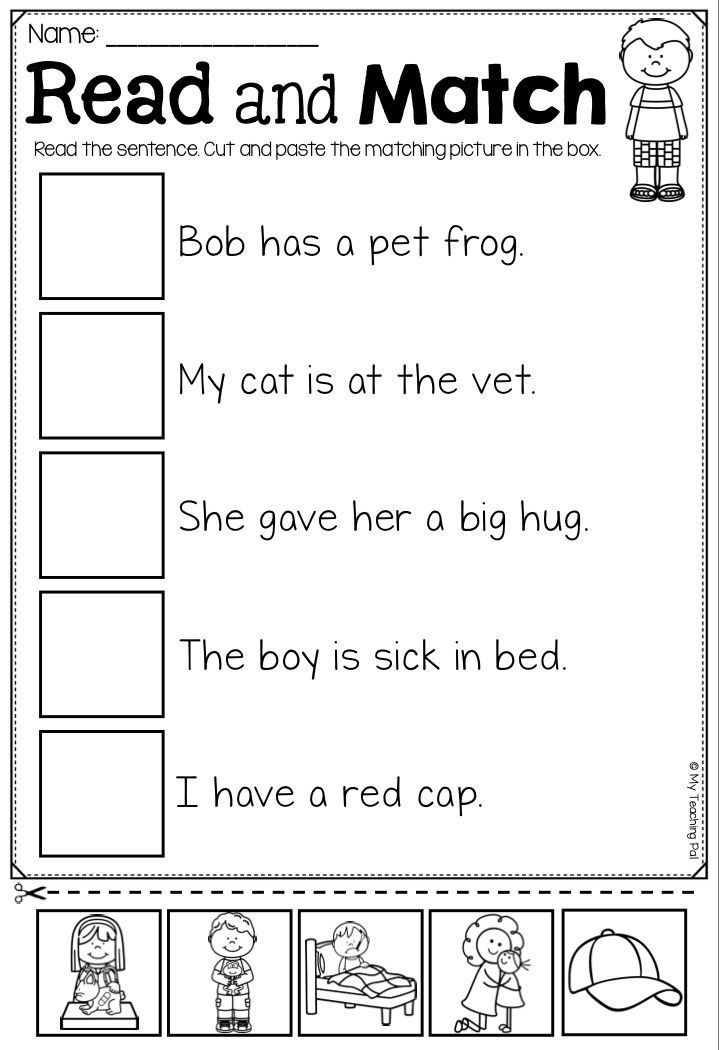
How can we make the process of reading a personal necessity for children? In this case, games are very useful, during which learning to read is easy and fun.
Evenings of family readings, filled with a lively, smart word, also play a huge role.
Working on reading technique is a rather lengthy process and not always attractive for children. However, without a normal reading technique in high school, learning will be significantly difficult.
If the child is only at the first stages of mastering the technique of reading, do not force him to read for a long time.
It is better to read less, but more often. I read for 5-7 minutes and retold the content of the paragraph. In an hour or two, another 1-2 paragraphs. Another serving before bed. The effectiveness of such training is much higher than reading an hour and a half at a time.
Reading before going to bed gives good results. The fact is that the last events of the day are recorded by emotional memory, and during those hours when a person sleeps, he is under their impression.
The fact is that the last events of the day are recorded by emotional memory, and during those hours when a person sleeps, he is under their impression.
If the child does not like to read, then the gentle reading mode is necessary (because it means that he has difficulties while reading)
In the gentle reading mode, the child reads 1-2 lines and after that he gets a short rest.
In order for a child to visually see his growth in mastering the technique of reading, it is necessary to measure the speed of reading more often and do it in the most solemn way.
The child will treat his "growth by reading" as jealously as the marks of his growth on the door.
It is necessary to celebrate growth, compare today's results with yesterday's, rejoice at every step forward, every success.
Teachers came to the conclusion that if a child does not learn to read normally in the first year of study, then his interest in learning drops significantly.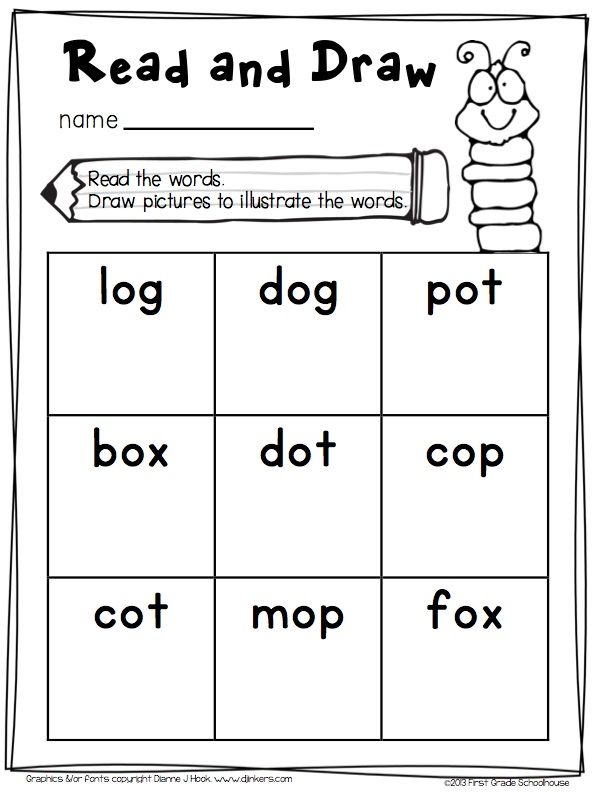
Having learned to read, a child discovers the world of great literature.
In order for a child to love reading, it is very important to create his own home library.
The first approach - a working library that helps in everyday educational and extracurricular work: dictionaries, Encyclopedias, popular science literature, periodicals.
The second approach is the acquisition of favorite books that have been read and become loved (books-friends, books-helpers, books-interlocutors).
Parents themselves need to have a good knowledge of children's literature in order to help their children's development.
Introducing children to reading should begin with the choice of literature.
here will help the children's classic :
K. Chukovsky
S. Marshak,
A. Barto,
V.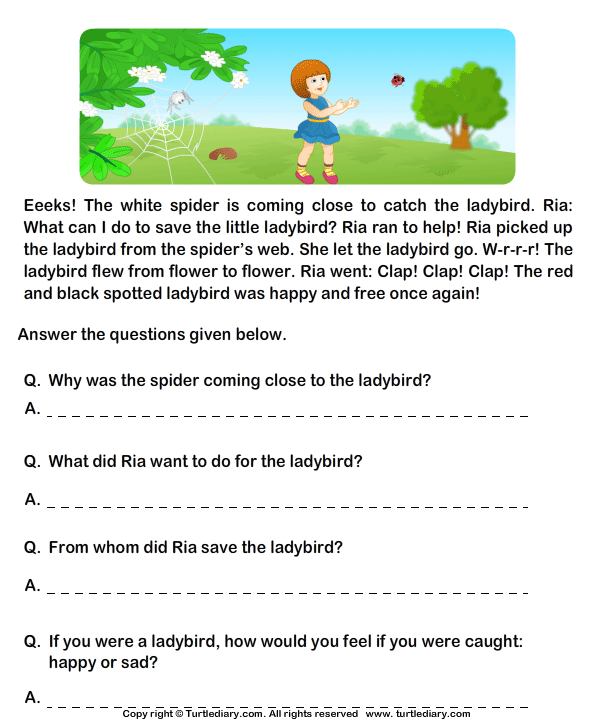 Bertestov,
Bertestov,
B. Zakhoder,
N. Nosov,
V. Golyavkin,
E.Uspensky
When a child begins to have questions about various objects, phenomena, interests, hobbies, it's time to introduce him to popular science literature.
Here you can refer to the "golden" fund of children's scientific and educational literature - books by M. Prishvin, E. Charushin, G. Snegirev, V. Bianki, N. Akimov, G. Skrebitsky, Yu. Dmitriev and others; Books of an encyclopedic nature: “I know the world”, “Everything about everything”, “My first encyclopedia”, etc.
The third approach - The child should be enrolled in the library, where from the abundance of books you can choose what he needs.
It is very important that the child is brought up with a careful and loving attitude towards the book, so that he keeps order in his book corner.
The fourth approach - Even a child who reads fluently will still need to be read aloud to him for a long time, so that, while reading, answer his questions, share with him his feelings and thoughts about what he has read.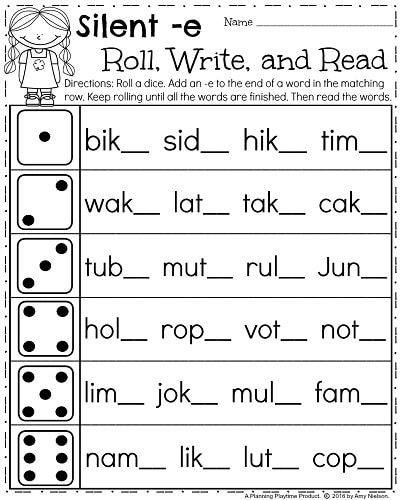
Parenting Guide
" Helping Your Child Love Reading"
- Listen to what your child is reading.
- Talk about the read material with the child, explain incomprehensible words and the meaning of the text.
- Write it to the library.
- Browse your child's selection of books to read.
- Tell us about your favorite books and authors.
- Read the books yourself.
- Create your own or your child's library.
Assessment of reading technique in primary grades
according to GEF
Reading technique in grade 1
The ability to read is one of the most important skills that contribute to the successful assimilation of knowledge. At the first stage of teaching reading technique, quite a lot of attention is paid.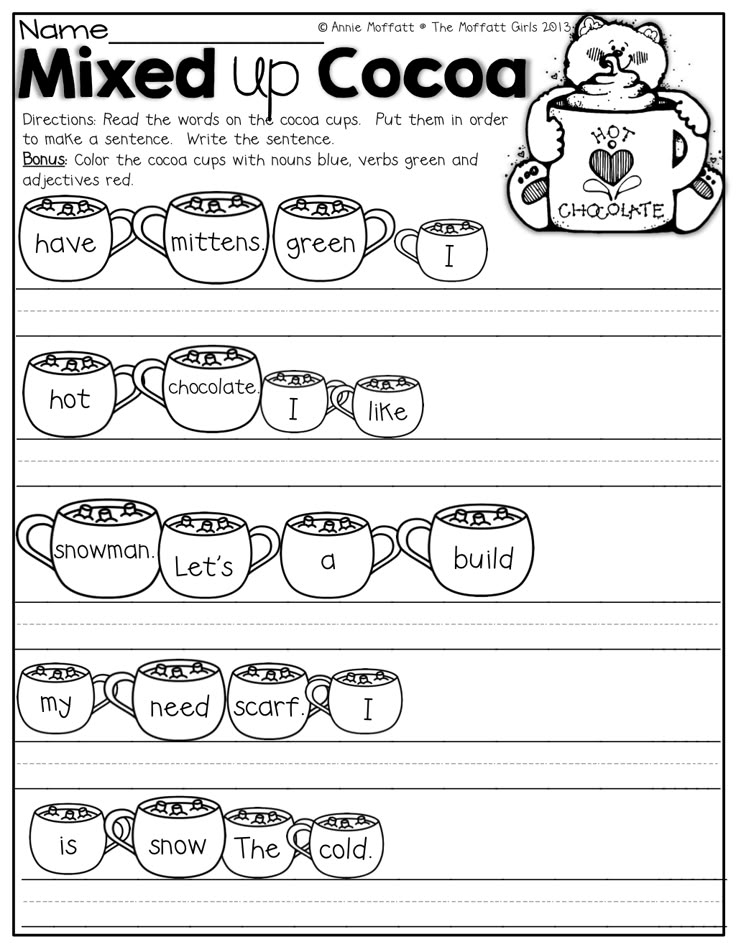 This is not surprising, because it is during this period that the pace of reading is formed.
This is not surprising, because it is during this period that the pace of reading is formed.
Especially carefully the reading technique is monitored in the 1st grade. During this period, reading is the object of assimilation. First graders are tested:
- whether the way of reading by syllables has been formed;
- to what extent there is an awareness of the general meaning of the read text;
- does the child understand what individual words and sentences mean;
- whether the pauses separating sentences are respected.
Reading requirements
Reading technique may not be checked in the 1st half of the year.
At the end of the second half of the year, the child should have formed a conscious, correct reading. Simple words are read as a whole word. Syllabic reading of polysyllabic words is allowed.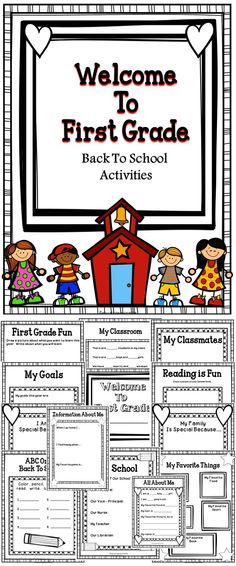
According to the indicative indicators of the Federal State Educational Standard, the reading speed in the 1st grade should be:
in the 1st half of the year - 25-30 words per minute
in the 2nd half of the year - 30-40 words per minute.
Features of the test
Grades are not given in Grade 1, the student either “handled” or “failed” the task.
To check the reading technique, it is necessary to prepare a text unfamiliar to the child in advance. Sentences in the text should be simple and short. Cardboards should not be so that the student is not distracted. It is important to set the child up for fast reading.
In the process of reading, a first-grader must follow the text with his finger so as not to lose the line. When a child has begun to read, you should not stop him, even if he made a mistake in reading the word or in placing the stress. After reading, you need to ask the child a few questions about the text.
After reading, you need to ask the child a few questions about the text.
Reading skills and foundations are laid for children in the 1st grade. Therefore, during this period it is extremely important to pay special attention to the success of the kids in school, in order to provide them with timely assistance in case of lagging behind.
is just a miracle-more than 20.
This is great-16-20
is wonderful-10-15
EX, less-less than 10.

 Finally, they agreed on (found a common language).
Finally, they agreed on (found a common language). 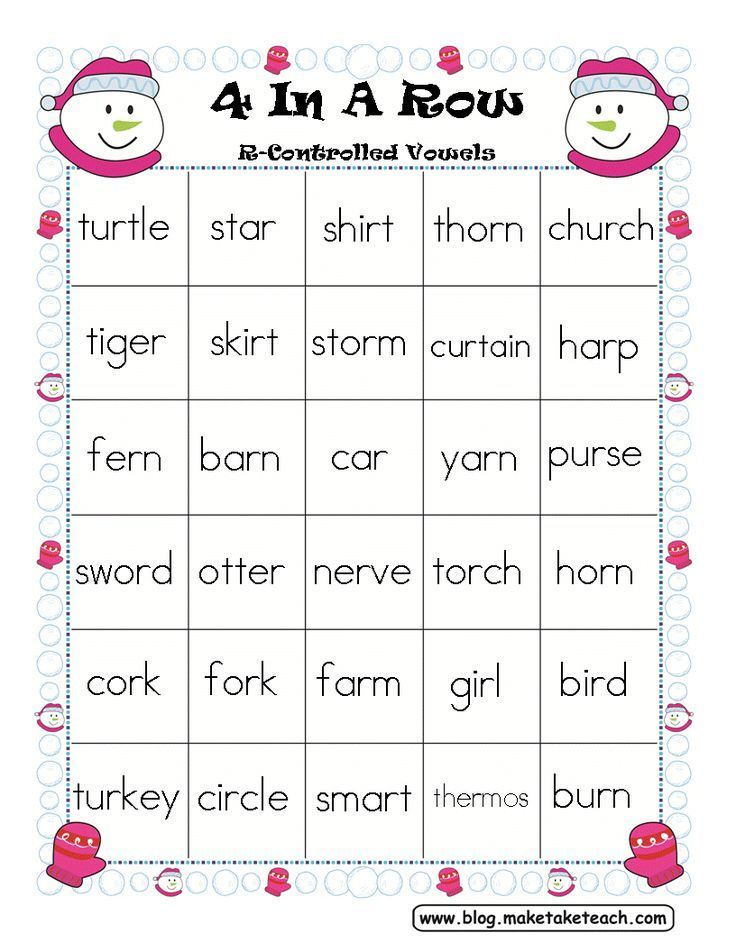
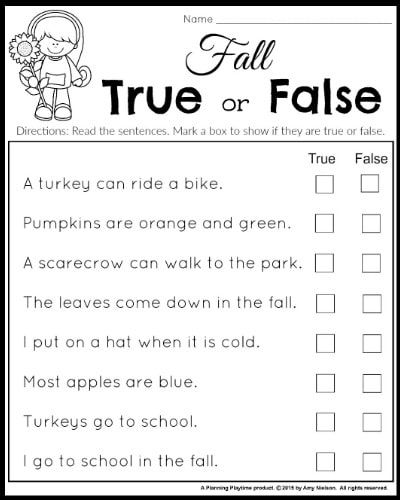 It turns out that Natasha, my classmate, saw my diary, decided that I accidentally forgot to give it for verification, and took the diary to the classroom. And then I felt such annoyance and was so angry that I threw this diary behind the bookcase, which was in our classroom.
It turns out that Natasha, my classmate, saw my diary, decided that I accidentally forgot to give it for verification, and took the diary to the classroom. And then I felt such annoyance and was so angry that I threw this diary behind the bookcase, which was in our classroom.  P.'s story Gaidar "Conscience".
P.'s story Gaidar "Conscience". 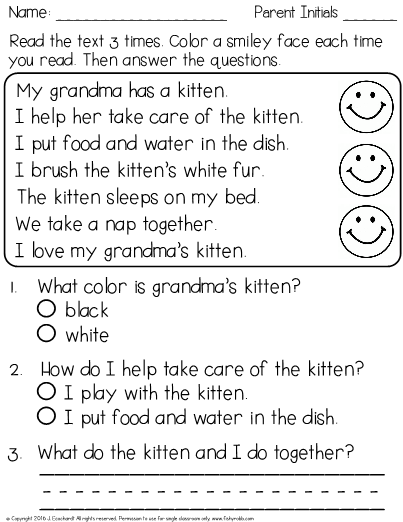 .. and decided not to go to school."
.. and decided not to go to school." 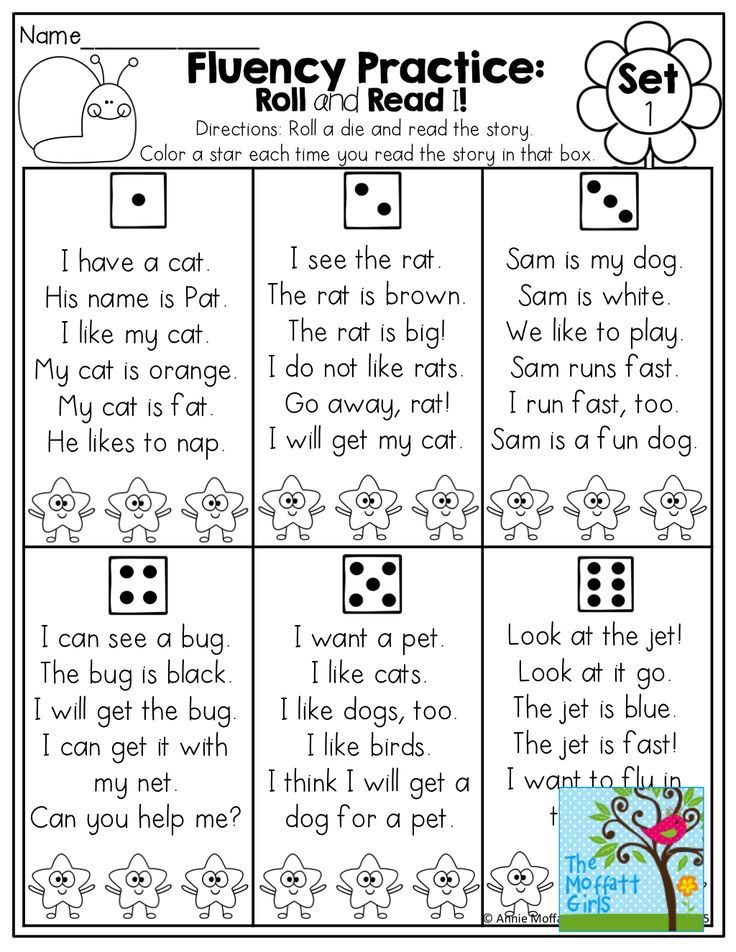
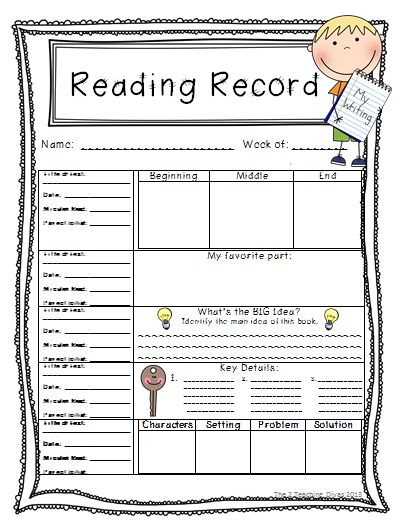 The main thing is to teach to see essential information in the text and not to ask superficial questions.
The main thing is to teach to see essential information in the text and not to ask superficial questions. 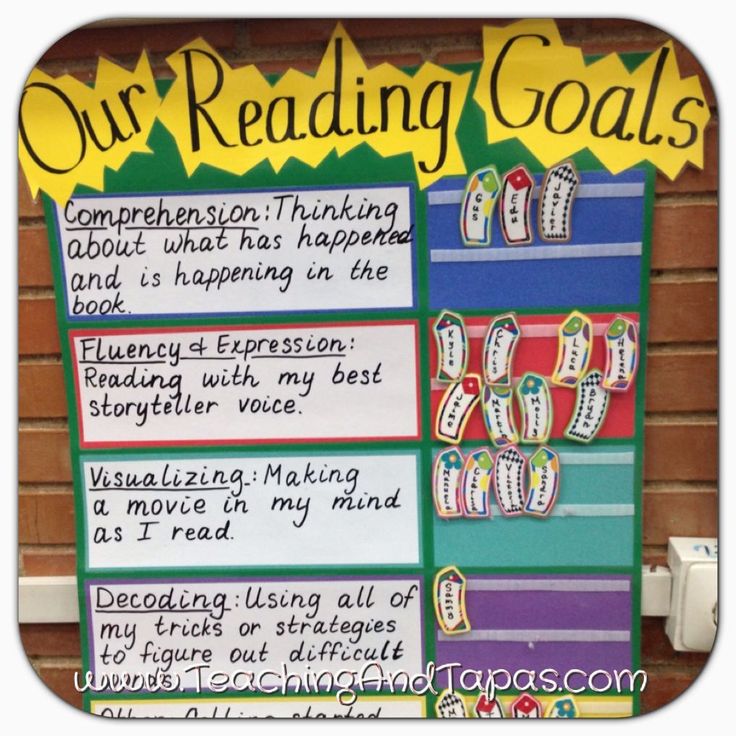 Reading distortion.
Reading distortion. 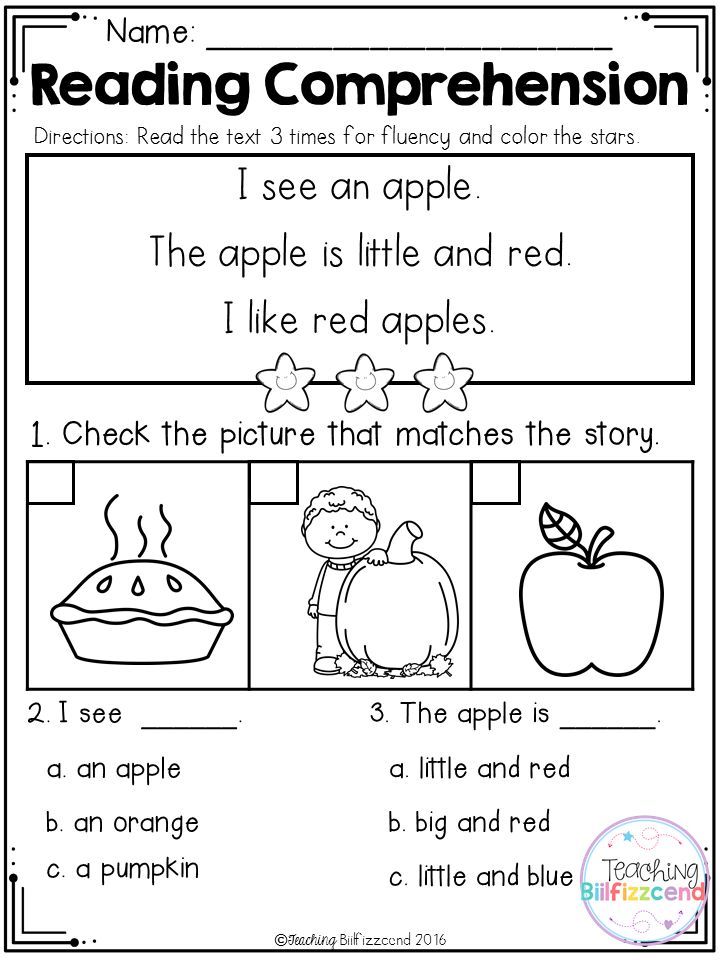
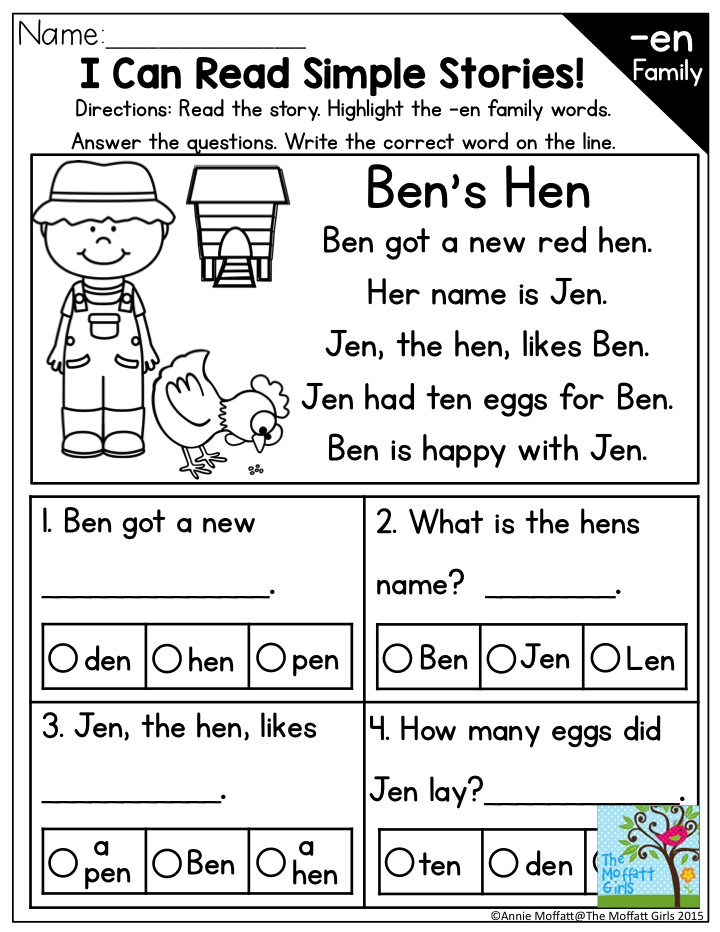
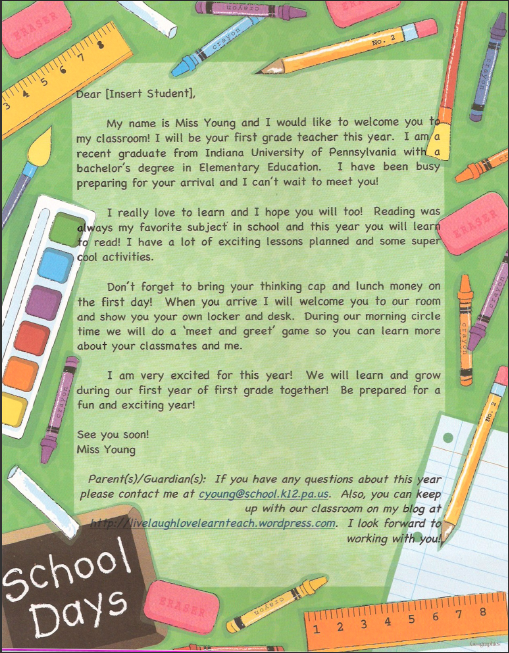 Text.
Text. 